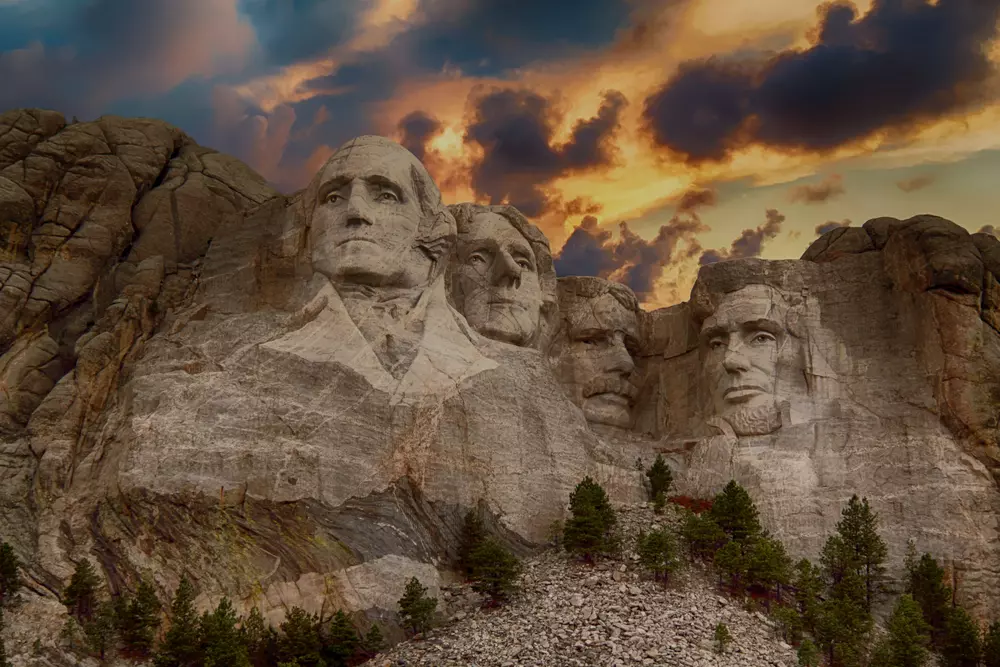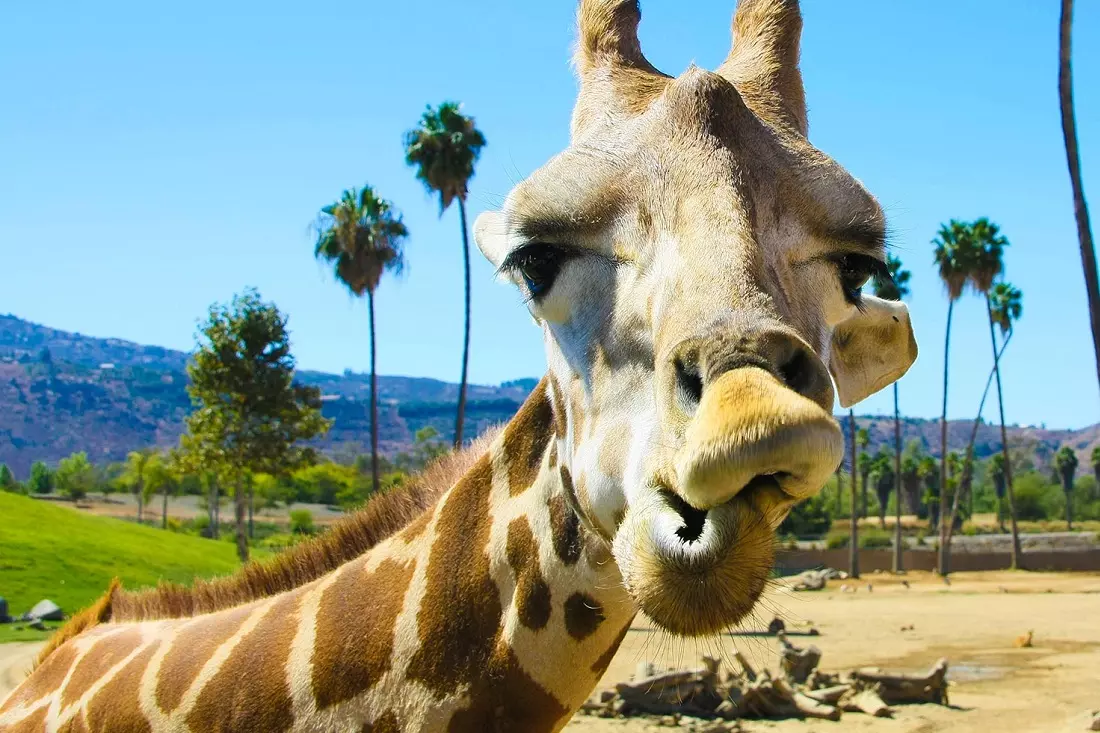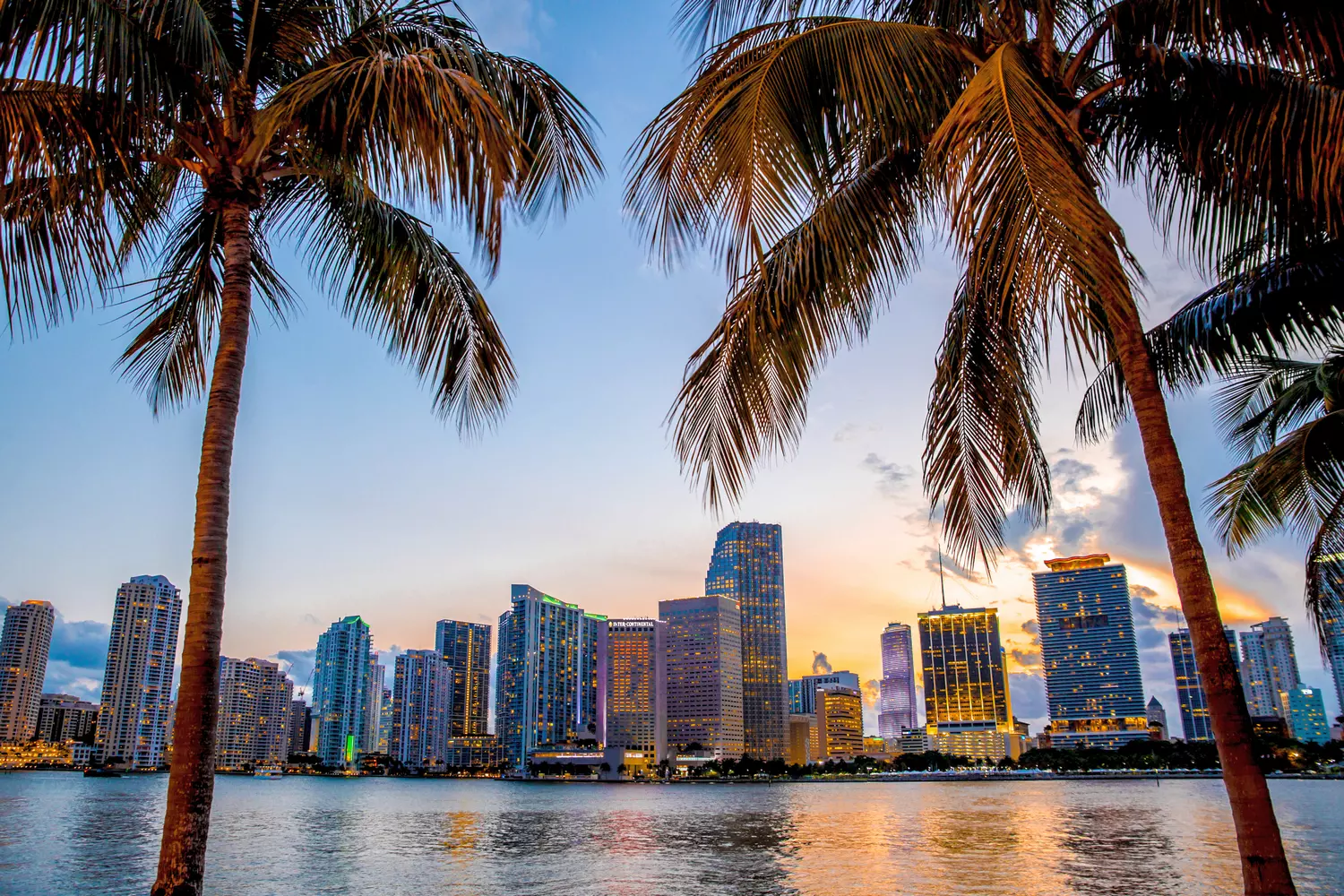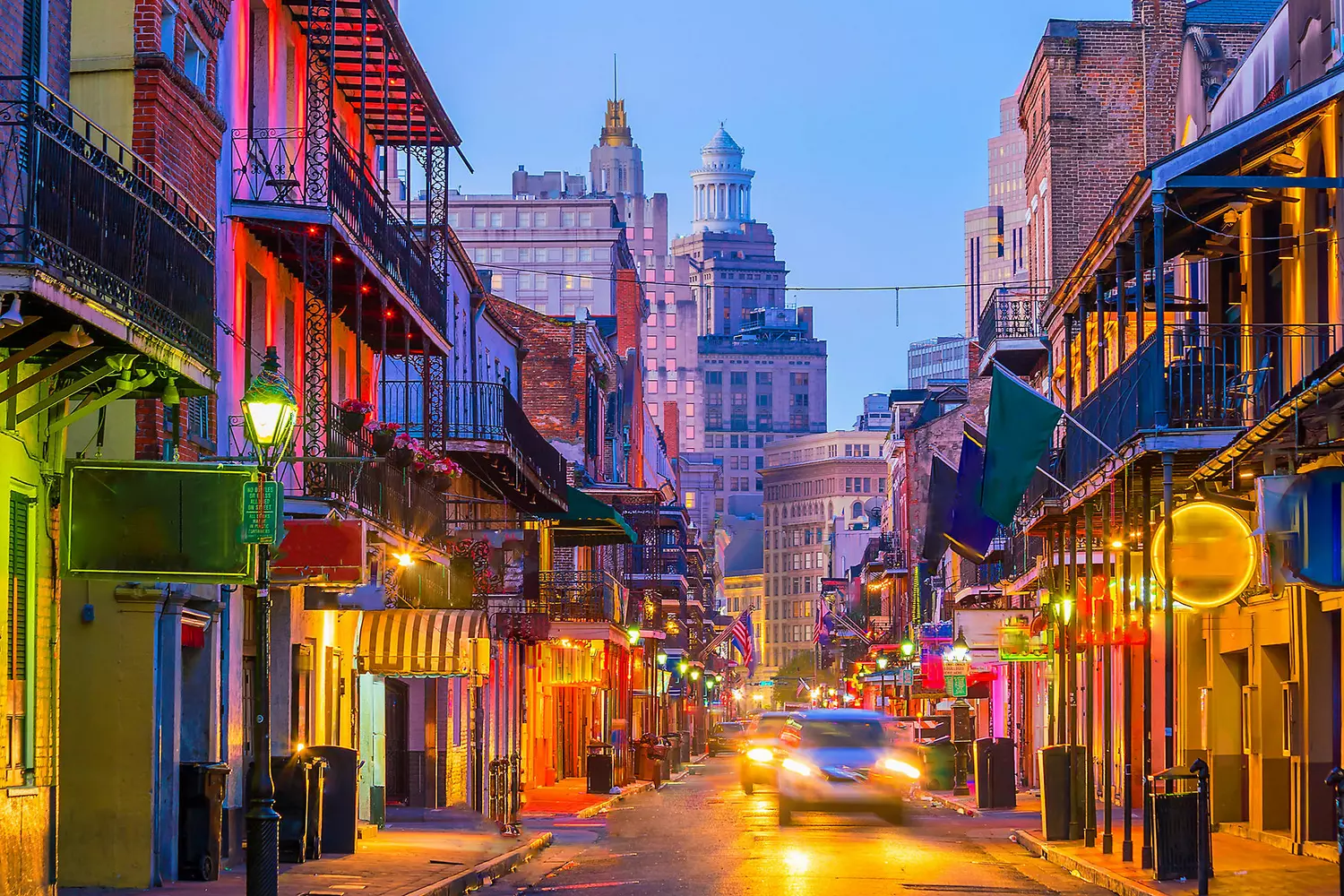When you hear the word “Arizona”, the first image that comes to mind is the Grand Canyon, eternal and majestic. But the truth is, this southwestern state is much more than just one wonder of the world. It’s a land where time seems to stand still, and every stone holds echoes of ancient times. Arizona is not just a point on the map of the USA; it’s another dimension that reveals itself only to those willing to look closer.
Here, ochre-colored mountains cut the horizon like blades, deserts stretch endlessly, and the sun beats down so fiercely that even the shadows hide. But if you pause for a moment, another world will open before you — a world of color, texture, silence, and history. Here, cacti as tall as three-story buildings seem alive. Here, the evening sky shines with millions of stars, just like in an astronomy textbook. Here, you can get lost — and find yourself.
Arizona is the sound of the wind in the canyons, the scent of dust and sage, the taste of adventure that stays with you long after. It’s the cries of hawks over the plateau, the cracks in the earth like wrinkles of time, it’s the Hopi and Navajo tribes still passing down oral legends to their children. It’s the land where dinosaurs once lived, and where artists, geologists, cowboys, and modern nomads now roam.
You can drive hundreds of miles and not see a single person. You can stand on the edge of a canyon and feel tiny — but not insignificant. You can arrive by chance and leave forever changed.
Why should you visit Arizona at least once in your life? Because it’s a place where geography becomes philosophy. Where stones are like sacred books. Where every bend in the road is full of meaning. Because Arizona is a journey not just along a route, but deep within yourself.
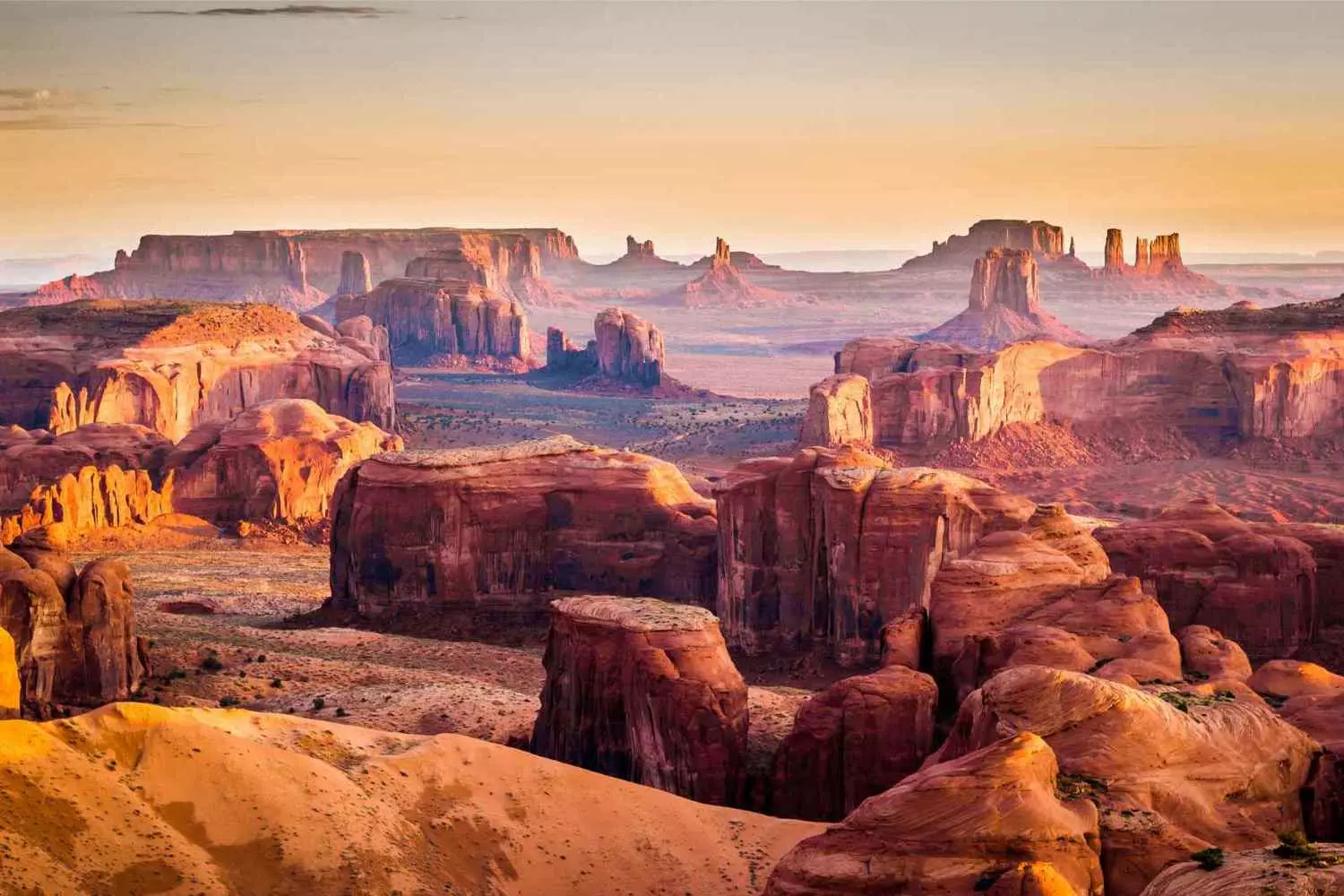
“Arizona is not just a place on the map. It is a state of mind where freedom and nature come together as one.” — Barry Goldwater (Senator from Arizona)
Why Arizona Is Unlike Any Other State: 6 Surprising Reasons That Will Amaze You
Arizona is not just a state in the southwestern USA. It is a natural phenomenon, a cultural construct, and a geographical anomaly all at once. No other region in the country can boast such a combination of climate, terrain, history, and light. Below are the main things that make Arizona truly unique.
- 01. Breathtaking National Parks
Arizona is home to more than 20 national parks, reserves, and natural monuments, each feeling like a separate planet. Of course, the Grand Canyon is the crown jewel, but don’t limit yourself to just it.
Every park in Arizona offers a chance to see what the planet looked like in prehistoric times and how it still manages to amaze. - 02. Over 300 Sunny Days a Year — Almost Guaranteed Good Weather
Arizona ranks among the sunniest places on Earth. In the city of Yuma, for example, the sun shines over 320 days a year — an absolute record among inhabited places on the planet.
This means you can plan your trip without much worry about rain. The weather almost always favors travelers here: dry, warm, and bright. Perfect for hiking, photography, walks, and simply feeling like you’re inside an Instagram filter with no editing. - 03. Living Heritage of Native Peoples
Arizona is the land of indigenous tribes. More than 20 federally recognized Native nations live here, including the Navajo, Hopi, Apache, Yavapai, Tohono O’odham, and others. They are not just residents — they are the keepers of the land’s history. Many reservations in Arizona offer opportunities to:
- Visit traditional villages and ceremonies;
- Purchase authentic turquoise, leather, and pottery crafts;
- Hear oral legends passed down for hundreds of years.
The tribes have not faded into modernity — they continue to speak their native languages, maintain their livelihoods, and strive to preserve their world. Traveling through Arizona is also a profound encounter with America’s living cultural heritage.
- 04. Natural Wonders Found Nowhere Else
If you think you’ve seen it all, take a look at some of Arizona’s natural formations:
- Horseshoe Bend
The bend of the Colorado River forming an almost perfect semicircle. Standing on the edge of this cliff is like looking into the mouth of geological time. - Antelope Canyon
A narrow sandstone canyon where light turns into painting. A perfect spot for photos, but even more importantly — the feeling that you are inside the earth’s elemental force. - Monument Valley
A landscape that became an icon of the American West. Red monoliths resembling castles stand amidst desert plains like ruins of an ancient city.
This is not just beautiful. It’s poetic. It’s about how the planet creates masterpieces without human intervention.
- 05. From Desert to Snow: One State — All Climate Zones
Arizona surprises not only with its heat. Within a single day you can be:
- In the scorching desert near Phoenix in the morning;
- On the pine plateaus around Flagstaff by midday;
- In the snowy mountains at the Snowbowl ski resort by evening.
The elevation difference in Arizona is more than 3000 meters! This means you can encounter saguaros, spruce forests, and snowy peaks — all in one state. Such natural amplitude is rare not only for a state but even for a whole country.
- 06. The Light That Inspires
Photographers and artists fall in love with Arizona for a reason. The local light is special. In the dry air, it doesn’t diffuse but falls with sharp shadows and rich colors. Sunsets in Sedona or sunrises over Monument Valley become not just shots but visual experiences.
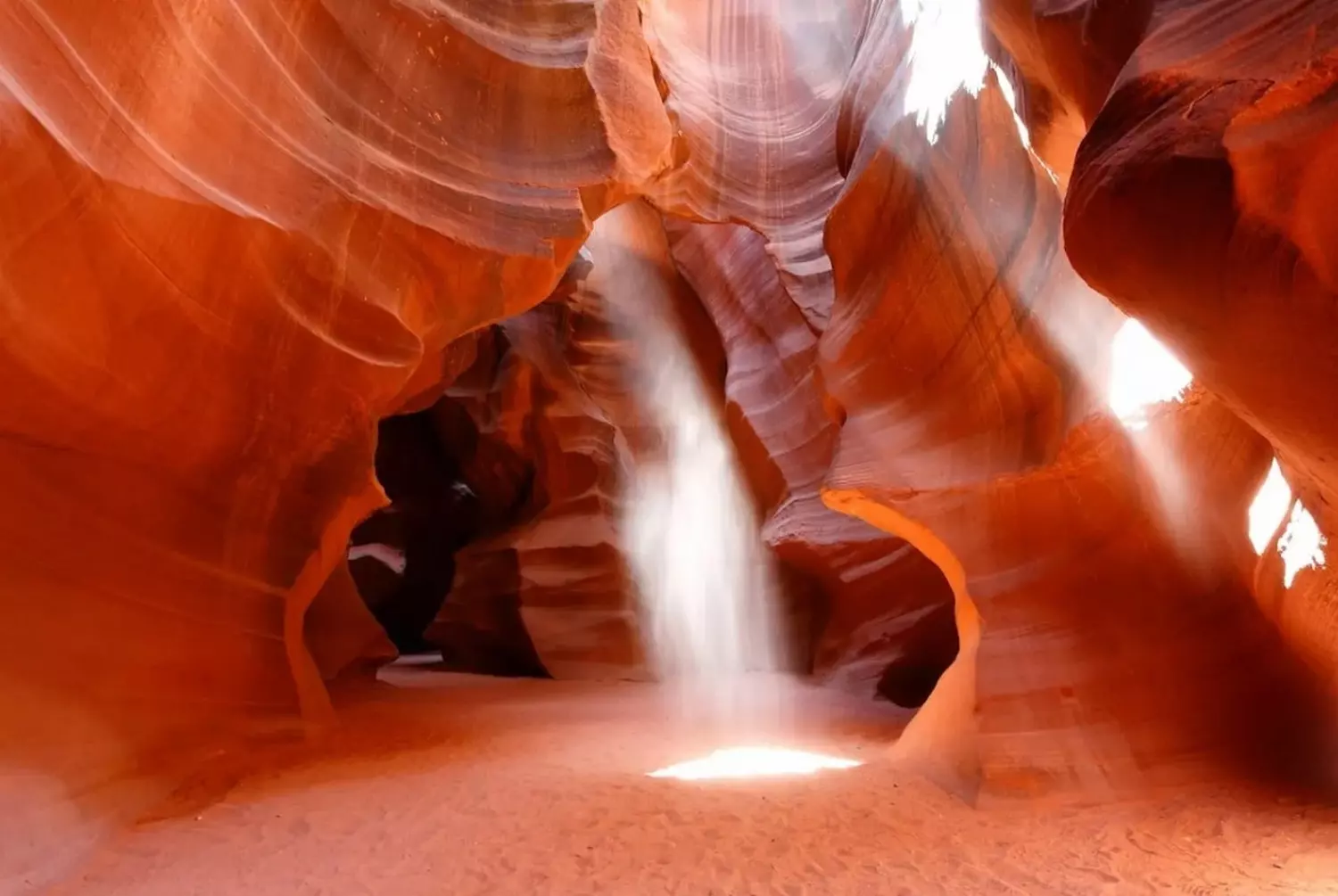
Arizona: Land of Spirits, Gold, and the Struggle to Survive
Arizona is not just arid land under the scorching sun. It’s a territory where every meter holds the trace of people who lived here thousands of years ago. It’s a land where tribes of hunters were followed by indigenous civilizations, who in turn were succeeded by Spanish conquistadors, gold seekers, and cowboys. Arizona's history is alive, multilayered, dramatic — and at the same time, deeply inspiring.
- 01. The Ancients: Who lived in Arizona before the Europeans arrived?
Long before maps and flags existed, life was already thriving here. The earliest traces of humans in Arizona date back to 10,000 BCE. These were mammoth and bison hunters who left behind stone tools and mysterious rock carvings.
Later, around 1000 BCE, the Anasazi, Hohokam, and Mogollon civilizations emerged — they built irrigation canals, grew corn, and created stone cities, some of which can still be seen in national parks such as Canyon de Chelly and Montezuma Castle.
These cultures either disappeared or transformed, leaving descendants in today’s Navajo, Hopi, Zuni, and Apache tribes, who still inhabit Arizona reservations and consider this land sacred. - 02. The Arrival of the Spanish: Cross, gold, and missions
In the 16th century, the Spanish arrived, driven by dreams of golden cities — the mythical Cibola. In 1539, the Franciscan friar Marcos de Niza became the first European to set foot on Arizona soil. He was followed by conquistadors, who found no gold but established missionary settlements and brought religious and cultural influence.
Spanish missions and outposts became hubs of life, especially in the southern part of the state, where locals were actively converted to Christianity. Some buildings — such as the Mission San José de Tumacácori — are still standing today. - 03. U.S. Territory: Wars, railroads, and the Wild West
In the mid-19th century, Arizona became a stage for armed conflicts and land deals. After the Mexican-American War (1846–1848), much of the Southwest, including Arizona, was ceded to the U.S. In 1854, the U.S. purchased the remaining southern territories from Mexico through the Gadsden Purchase.
This marked the beginning of the settlement era. Gold miners, cowboys, and settlers poured into the region. Arizona became a quintessential symbol of the Wild West — with saloon shootouts, outlaw gangs, and legendary sheriffs. Towns like Tombstone, home to the famous gunfight at the O.K. Corral, are now historic landmarks.
Railroads arrived in Arizona in the 1880s, changing everything — they connected the region with the rest of the country, brought investments, goods, and new residents. - 04. 1912: Arizona becomes the last of the continental states
Unlike many other U.S. states, Arizona only achieved statehood on February 14, 1912 — becoming the 48th and final continental state (before Alaska and Hawaii joined later). This was the result of prolonged debates, political maneuvering, and pressure from Washington.
From that moment, Arizona began to develop as a full-fledged state with a distinct identity. Its growth focused on two pillars: tourism and natural resource extraction. Copper, silver, and uranium were mined and exported on a massive scale. - 05. The 20th Century: From desert to space
During World War II, Arizona served as a location for military bases, training grounds, and POW camps. After the war, it became an important player in the space race: the lunar landscape of northern Arizona was used by NASA to train Apollo astronauts for their Moon missions. Quite literally, the first steps on the Moon were rehearsed among Flagstaff’s craters.
Around the same time, Phoenix grew from a dusty town into a sprawling metropolis, attracting retirees, the tech industry, and healthcare institutions thanks to its climate. - 06. Modern Arizona: A balance of past and future
Today, Arizona is one of the fastest-growing states in the U.S. It combines:
- Tech startups in Phoenix;
- Wellness retreats in Sedona;
- Student life in Tucson;
- A rich cultural heritage in the reservations;
- And the enduring tourist power of places like the Grand Canyon and Monument Valley.
This is a state that hasn’t lost touch with its roots, yet looks firmly to the future. In one day, you can follow the footprints of dinosaurs, Native Americans, cowboys, and astronauts. And it will all be part of a single story — the story of Arizona.
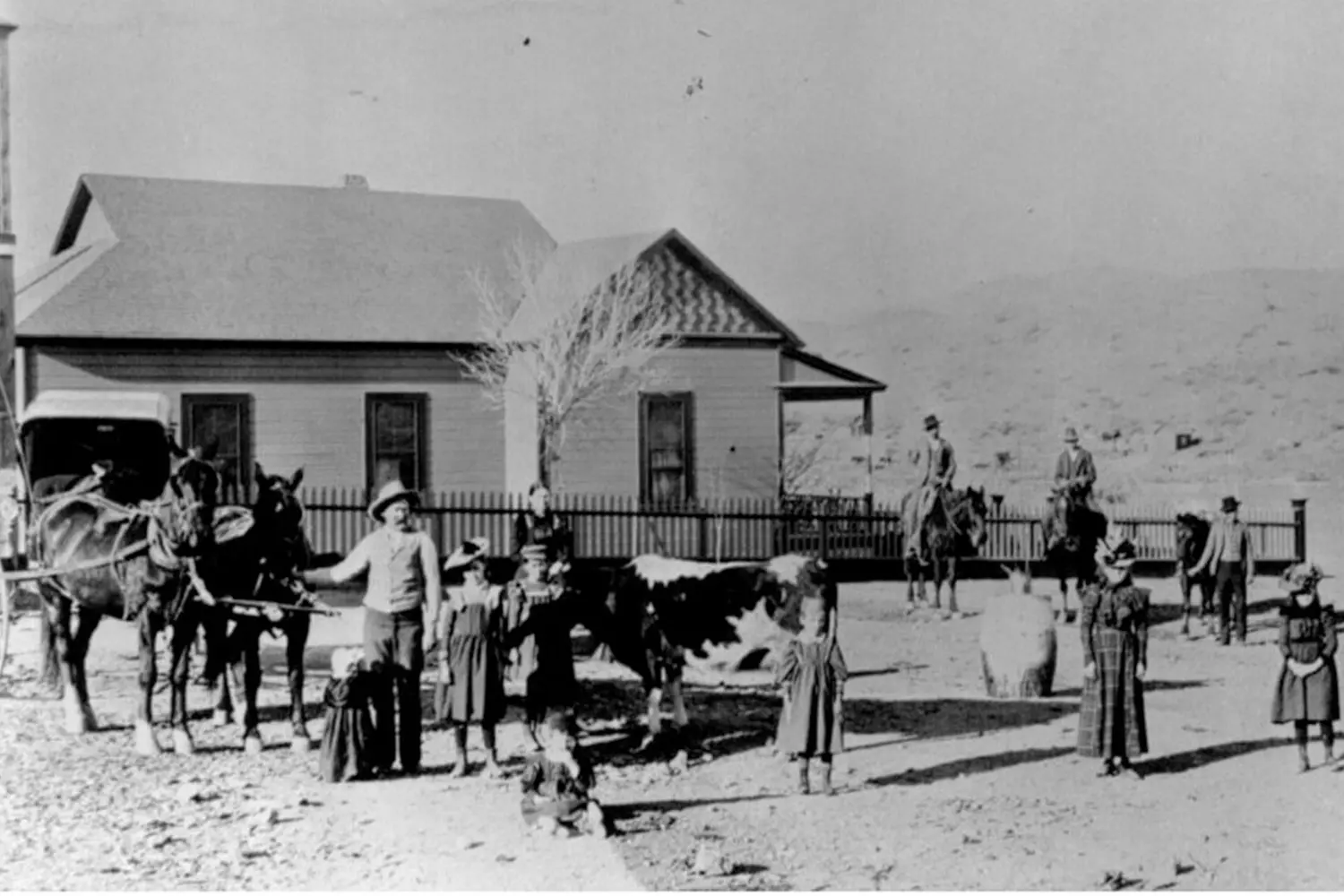
Symbols of Arizona: Cacti, Sunsets, and the Dusty Code of Identity
Every state has its own character, but Arizona's is especially vivid. It’s more than just a place — it’s a brand with its own set of symbols, from its flag to its flower, from its tree to its official mineral. Everything here says: “You are in Arizona.” And if you take a closer look at these symbols, you can begin to understand the essence of this dry, sunny, wild, and beautiful land.
- 01. The Arizona Flag: sunset, copper, and revolution in fabric
The Arizona state flag is one of the most distinctive among all U.S. states. It was adopted in 1917, just five years after statehood, and has remained almost unchanged ever since. Here's how it looks:
- The top half of the flag consists of 13 rays in red and gold, symbolizing both desert sunsets and the Spanish heritage (inspired by the Spanish flag).
- The bottom part is deep blue — the color of freedom and calm.
- In the center is a large copper star, a nod to the copper industry, which was once the economic backbone of the state.
Fun fact: Arizona is the leading copper producer in the U.S., and that’s reflected even in its flag.
- 02. State Motto: Ditat Deus — “God Enriches”
This motto dates back to 1864, when Arizona was still a territory. It speaks to faith in divine providence and the abundance of natural resources — from copper deposits to fertile land.
Today, the motto is a reminder of the balance between the spiritual and the material. Arizona truly is rich — in history, in landscapes, and in cultural meaning. - 03. Official Plant: the saguaro cactus
If the desert had a king, it would be the saguaro (Carnegiea gigantea) — a towering cactus standing like a sentinel at the gate. It can grow up to 12 meters tall, live for 200 years, and weigh up to two tons.
- The saguaro blooms in May, and its white flower is recognized as the official flower of Arizona.
- It grows only in the Sonoran Desert and is considered a sacred “tree of life” by the Tohono O’odham people.
In Arizona, cutting, moving, or destroying a saguaro without a permit is illegal and can result in fines or even jail time.
- 04. Official Animal: the ringtail
Arizona’s official mammal is not the coyote, the mountain lion, or a snake — it’s the ringtail cat, an adorable creature that looks like a mix between a raccoon, a cat, and a lemur. Rarely seen during the day, it’s a nocturnal hunter that lives in rocks and crevices.
Despite its small size, the ringtail is a true survivalist. It symbolizes agility, adaptability, and the hidden strength of Arizona. - 05. Official Bird: the cactus wren
The cactus wren is a loud, feisty, and unmistakable bird. It builds nests inside the spiky arms of saguaros to keep predators at bay.
This bird embodies the spirit of Arizona: small but resilient, singing loudly to the world, thriving in harsh conditions. That’s why it was chosen as the official state bird in 1931. - 06. Official Mineral: copper
No other mineral could represent the state better. Arizona is the copper capital of the United States. Over 60% of all copper in the country is mined right here.
- Massive mining sites like Morenci and Bisbee have become landmarks in their own right.
- Copper is used in wiring, construction, and technology — it quite literally connects Arizona to the rest of the world.
- 07. State Flower: the saguaro blossom
Saguaro blooming is a rare sight, but one you’ll never forget. The pure white blossoms appear only in spring, live for just one night, and are pollinated by bats, birds, and insects.
This bloom became a symbol of the desert’s fragile beauty and uniqueness, earning its official state flower status in 1931. - 08. Official Book: Arizona, a State Guide
In 1940, as part of the Federal Writers’ Project, the book Arizona, a State Guide was published. It contains over 500 pages on Arizona’s geography, history, culture, and spirit. It became the first official “calling card” of the state and remains a classic of guidebook literature. - 09. Official Song: Arizona (1970)
Arizona also has its own official song — a ballad about freedom, the desert, and love for the homeland, written by Jay Rancher. It’s performed at state events and evokes the pride Arizonans feel when they look at a cactus under a crimson sky.
The symbols of Arizona aren’t just decorative elements. They reflect the state’s true character — strong, free, enduring, and poetic in its own way. In every symbol lives the spirit of a land where everything survives, everything grows, and everything tells a story.
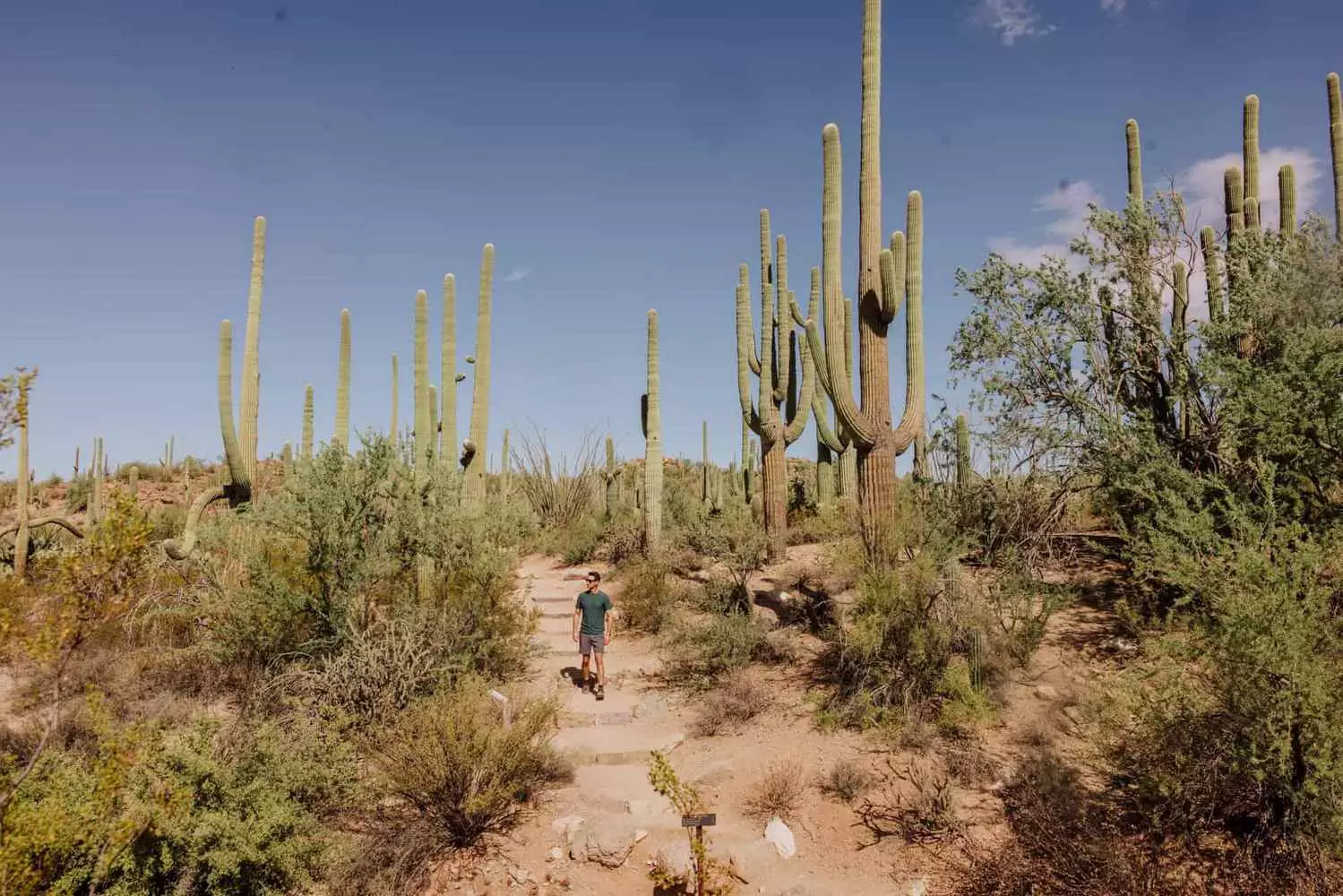
Land of Contrasts: Geography, Climate, Flora, and Fauna of Arizona
Arizona is one of the few U.S. states where nature seems to have decided to showcase its full arsenal. From scorching deserts to snow-capped peaks, from rocky canyons to forests and alpine meadows — here exist six geographic regions, each with its own climate, flora, and fauna. This stunning diversity explains why Arizona feels like several countries in one.
- 01. Geography of Arizona: sharp shapes, endless horizons
Arizona is located in the southwestern U.S., bordering California, Nevada, Utah, New Mexico, and — notably — Mexico. The state's total area exceeds 295,000 square kilometers, making it the 6th largest in the country. Geographically, Arizona is divided into three major zones:
- Colorado Plateau (northeast)
High-altitude, cool, and full of canyons. This is home to: the Grand Canyon, Kaibab National Forest, and the San Francisco Peaks volcano — the state's highest point (3,851 m). - Transition Zone (central part)
This area features sharp elevation changes, where cliffs, gorges, and forests form breathtaking landscapes. - Deserts and lowlands (south and southwest)
Here lie the Sonoran and Mojave deserts, where temperatures can reach +48°C and saguaro cacti resemble watchtowers in otherworldly landscapes.
Fun fact: Arizona is one of the few U.S. states where you can find nearly all landforms — except the ocean.
- 02. Arizona's Climate: heat, snow, and everything in between
Arizona’s climate is one of the most contrasting in the country. In the north — cold winters with heavy snowfall; in the south — almost tropical heat year-round. This phenomenon is due to sharp elevation differences — from 150 meters to nearly 4,000 meters above sea level.
- In the north
Winters are snowy, temperatures can drop to -15°C, and summers are pleasant at +20…+25°C. - In the south
Scorching summers: +40…+45°C, mild winters: +10…+20°C.
Arizona is one of the most sunny states in the U.S. Phoenix enjoys more than 300 sunny days a year, and the city of Yuma holds the world record: 330 sunny days annually.
- 03. Arizona’s Flora: more than just desert
Contrary to popular belief, Arizona is not just sand and rocks. It is home to over 4,000 plant species, including endemic ones found nowhere else.
- In the deserts
Saguaros — giant cacti growing up to 12 meters tall, prickly pears, chollas, agaves, yuccas. In spring — carpets of wildflowers, including California poppies and desert lilies. - In the mountains
Ponderosa pine — the largest pine species in the world, firs, spruces, junipers. Summers here are cool and fragrant with pine; fall brings a real foliage season. - Along rivers and oases
Willow and cottonwood trees, reeds, aquatic ferns, and date palms in irrigated valleys.
Fun fact: Arizona is home to the oldest olive grove in the U.S., planted by Spanish missionaries in the 18th century.
- 04. Arizona’s Fauna: survival as art
Arizona’s wildlife is just as diverse as its landscapes. There are over 800 vertebrate species — from the fearsome to the majestic.
- In the desert
Rattlesnakes (about 13 species), coyotes, desert foxes, tarantulas, scorpions, and roadrunners — the fast bird made famous by cartoons. - In the mountains
Deer, elk, brown bears, ringtail cats — the state’s official mammal, mountain lions (cougars), zone-tailed hawks, owls, and golden eagles. - Near water
Beavers, nutria, turtles, pelicans, herons, ducks, and fish such as trout and bass.
Arizona is home to the unique Sonoran Desert Conservation Area, which protects entire desert ecosystems and their rare plants and animals.
- 05. Arizona’s Natural Zones: ecosystems in miniature
Arizona consists of various natural zones, making travel across the state visually and climatically diverse every 100 miles. In a single day, you can:
- Start your morning in a dry desert,
- Have lunch among pine forests,
- And end the day playing in snow at a ski resort.
This makes Arizona a true living classroom for geographers, biologists, and nature lovers alike.
Arizona's geography shapes its character: unpredictable, free, profound. You don’t need to cross the whole country to see America’s full range of natural landscapes — just cross this one state.
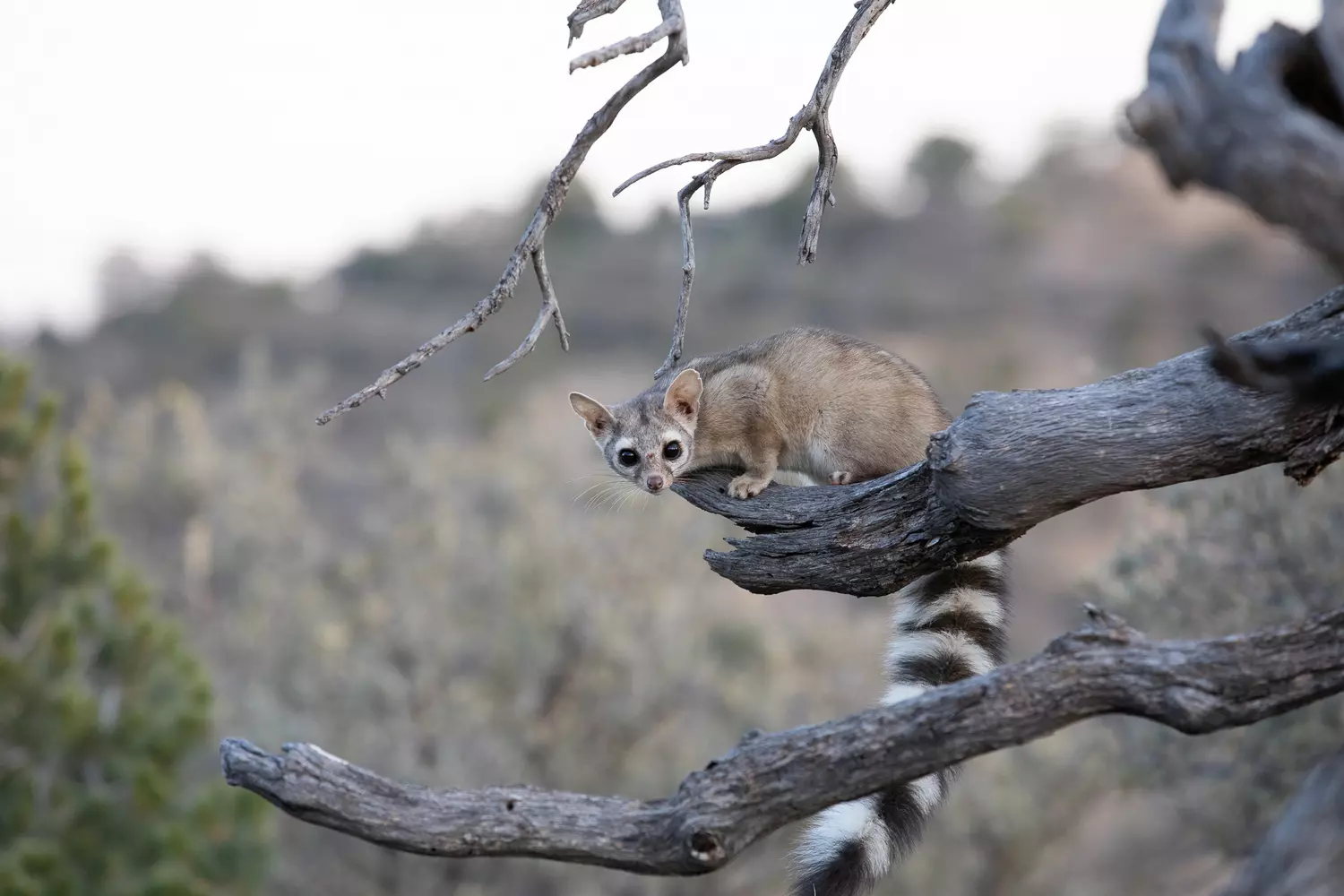
Cities of Arizona: From Desert Oases to Cultural Hubs
Arizona is not only endless deserts and majestic canyons. It’s also a collection of unique cities, each preserving its own history, style, and atmosphere. Nearly 7 million people live in this state, most of them concentrated in a few major metropolises and cozy towns. If you want to feel the pulse of Arizona, you need to get to know its cities — from dynamic Phoenix to creative Sedona.
- 01. Phoenix — the heart of Arizona and the city of sun
Phoenix is the largest city in the state and the fifth most populous in the U.S. It grew from a small farming settlement into a modern metropolis with over 1.6 million residents.
- The climate is hot and dry, but the city has advanced air-conditioning infrastructure and green parks.
- The cultural life is vibrant: you'll find contemporary art museums, concert halls, and theaters.
- The economy thrives thanks to IT, banking, and healthcare industries.
- Highlight — the Old Town Scottsdale district, where Western style meets modern art.
Phoenix is the perfect starting point for exploring Arizona’s nature, with the Grand Canyon and Sonoran Desert just a couple of hours away by car.
- 02. Sedona — city of artists and mysticism
Sedona is a small town surrounded by red rock formations, attracting creative souls and those in search of inner peace. It’s known for its “vortex energy” — mystical spots around which legends and meditative practices have formed.
- The area offers scenic trails for hiking and mountain biking.
- Galleries, artisan shops, and art festivals are Sedona’s signature.
- Nature is the main character here: crimson cliffs at sunrise and sunset create unforgettable views.
- The city is renowned for its spa resorts and wellness retreats.
Sedona is a soul oasis in the heart of the wilderness.
- 03. Tucson — a city rich in history
Tucson is Arizona’s second-largest city, located in the southern part of the state. It’s a true cultural hub with a vibrant Mexican influence.
- Home to one of the oldest universities in the U.S. — the University of Arizona.
- Known for its architecture in the Spanish Colonial Revival style.
- Tucson is a gateway to the Sonoran Desert, hosting numerous festivals celebrating culture and nature.
- Local cuisine blends South American and American traditions.
For lovers of history and gastronomy, Tucson is a must-visit.
- 04. Flagstaff — mountain coolness
Flagstaff is a mountain town in northern Arizona, sitting at an elevation of over 2,100 meters above sea level. It’s perfect for those tired of desert heat.
- Snowy winters and cool summers make it ideal for outdoor enthusiasts.
- The city is a base for trips to the Grand Canyon, San Francisco Peaks volcanoes, and national forests.
- Flagstaff has a creative, student vibe thanks to Northern Arizona University.
- It features many museums and science centers, including the Lowell Observatory, where Pluto was discovered.
Flagstaff is a city for lovers of nature and science.
- 05. Tempe — city of students and innovation
Tempe is a dynamic town near Phoenix, known for its youthful and vibrant atmosphere.
- It hosts the campus of Arizona State University, one of the largest universities in the U.S.
- Tempe is famous for its lively nightlife, cafes, and festivals.
- The city is actively developing tech and startup industries, becoming an innovation hub.
- Lovely parks and bike paths make it comfortable for both living and recreation.
If you want to experience the energy of a modern city, Tempe is a great choice.
- 06. Tubac — a small town with a big heart
Many travelers are unfamiliar with Tubac, a cozy settlement in southeastern Arizona known for:
- Strong ties with Native American tribes and Spanish heritage.
- Opportunities for hunting and fishing.
- A warm climate and a peaceful vibe.
This is a place for those who want to experience the real Arizona, far from the hustle and bustle of big cities.
Arizona is a stamp in your passport of adventures, where each city is a separate chapter. From metropolises to quiet towns — everything here lives its own story and invites you to rediscover yourself.
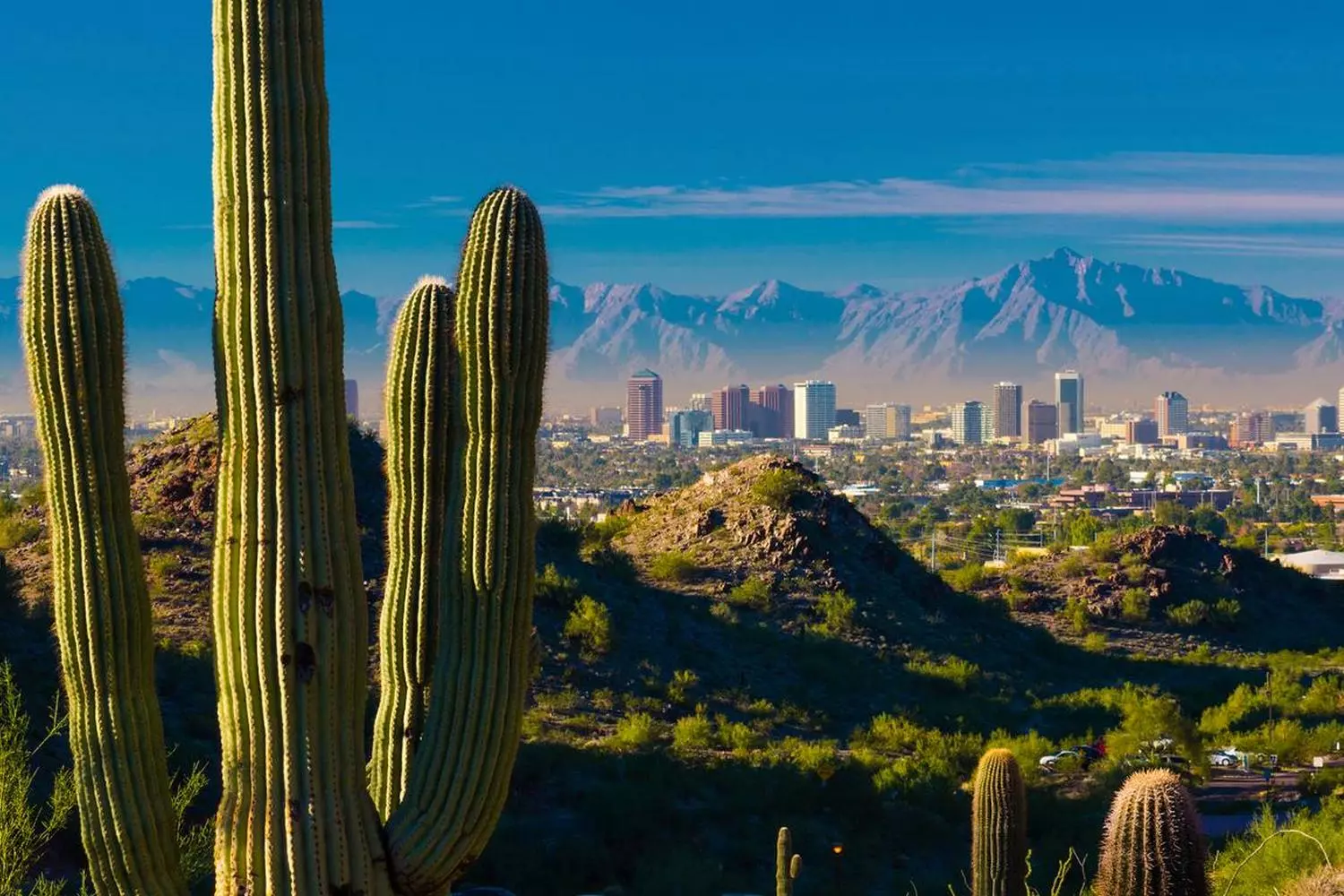
Arizona Today: A Growing Economy and Diverse Population
Arizona is not only about colorful landscapes and tourist attractions. Beyond its borders, life is thriving, businesses are growing, ideas are born, and a diverse population is expanding. This state is developing rapidly and gaining increasing influence in both economic and social spheres. Let’s explore what makes Arizona special in the modern world.
- 01. Arizona’s Economy: Growth Drivers and New Industries
Since the 1990s, Arizona’s economy has been steadily gaining momentum. Today, it ranks among the top 15 state economies in the U.S. The main sectors include:
- Technology and Innovation
Phoenix and Tempe have become true hubs for IT companies and startups. Software development, biotechnology, medical technologies, and semiconductor manufacturing (e.g., Intel has major plants in the state) are thriving here. - Mining Industry
Historically, Arizona was known as the “Copper State.” Copper, silver, gold, and other minerals are still mined here and remain an important export. - Tourism and Hospitality
Millions of tourists come every year to see the Grand Canyon, deserts, mountains, and cities. This creates strong demand for hotels, restaurants, tours, and entertainment. - Agriculture
Despite the desert climate, Arizona grows citrus fruits, onions, tomatoes, cotton, and grapes for winemaking, using modern irrigation technologies.
- 02. Arizona’s Population: Diversity and Dynamics
With a population of over 7 million people, Arizona is one of the fastest-growing states. Over the past 20 years, the number of residents has doubled due to migration from other states — especially California and Illinois — as well as immigration from Mexico and other countries, and local population growth. The ethnic composition includes:
- White — about 55%;
- Latino/Hispanic — approximately 30%;
- African American — 5%;
- Native American — about 5%, including Navajo, Hopi, and Apache tribes;
- Asian and others — the remaining percentage.
This mix of cultures creates a unique atmosphere where Mexican cuisine, Indigenous traditions, and modern American values coexist.
- 03. Urbanization and Living
The majority of the population is concentrated in major cities: Phoenix, Tucson, Mesa, and Tempe. Fewer people live in rural areas, which are home to more traditional tribal communities.
Arizona attracts retirees due to its mild climate and affordable housing, as well as young professionals and entrepreneurs seeking new opportunities. - 04. Development Prospects and Challenges
Arizona continues to grow, but it faces challenges:
- Water resource management — the desert climate demands careful water use;
- Infrastructure — roads, schools, and healthcare must keep pace with population growth;
- Environmental sustainability — preserving nature and fighting pollution.
At the same time, the state is investing actively in education, healthcare, and technology to maintain a balance between development and quality of life.
The economy and population of Arizona are two interconnected pillars supporting the state’s current success. It is a place where opportunity meets tradition, and where people are shaping the future in the heart of the desert.
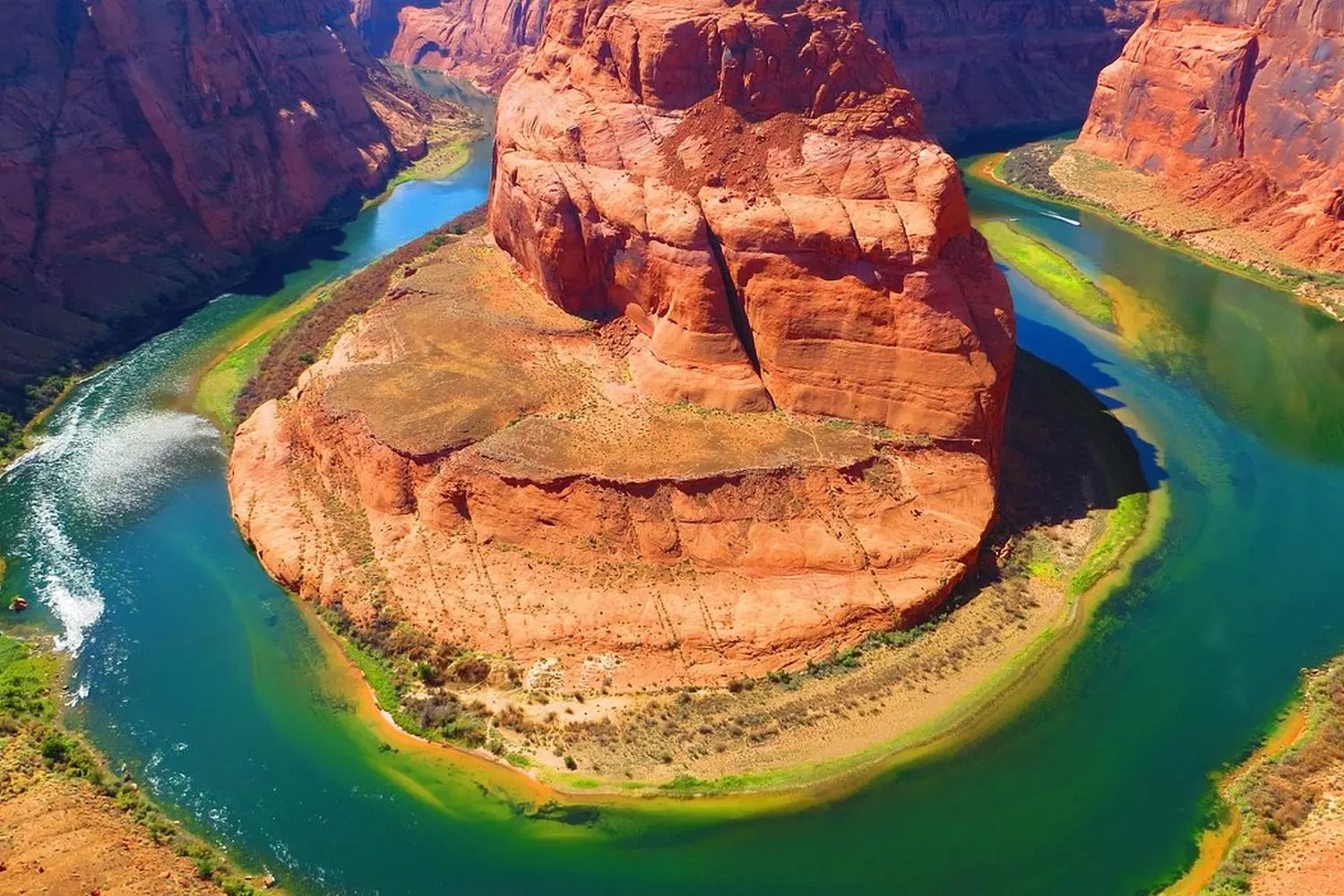
Texas: Tech-Savvy Cowboys & Holy BBQ
Natural Wonders of Arizona: From Majestic Canyons to Enchanting Deserts
Arizona is not just a state with a hot climate and red rocks. It's a land of fantastic landscapes, each one worthy of a separate journey. Here, you'll find some of the most impressive natural wonders in North America — places that will leave no traveler indifferent.
- 01. Grand Canyon — the legend and symbol of Arizona
Undoubtedly, the Grand Canyon is the state's main natural symbol and one of the Seven Natural Wonders of the World. This canyon, carved by the Colorado River, reaches:
- Length — about 450 km;
- Depth — up to 1.8 km;
- Width — up to 29 km.
Every sunrise and sunset here is a show of light and color, turning canyon walls from golden to crimson-violet hues.
Fun fact: Geologists believe the canyon began forming around 5–6 million years ago.
- 02. Petrified Forest National Park — an ancient fossilized forest
This park is home to a stunning collection of petrified trees, some over 200 million years old. You can walk among stone trunks that still preserve wood structure.
- The park is unique for preserving flora from the Mesozoic Era;
- All around are colorful hills and layered soils creating a Martian-like landscape.
This is a treasure trove for geologists and photographers alike.
- 03. Saguaro — a desert of giants
Saguaro National Park is not just a park — it's home to Arizona’s most iconic cacti. The saguaro cactus can grow up to 12 meters tall and live over 150 years.
- The park is divided into east and west sections, each with unique ecosystems;
- In spring, the desert comes alive with blooming cacti and other plants.
Walking here is a true immersion into the Sonoran Desert world.
- 04. Horseshoe Bend — a natural bend in the Colorado River
Horseshoe Bend is a dramatic river meander shaped like a horseshoe. The cliff above the river rises around 300 meters.
- A favorite among photographers and lovers of panoramic views;
- Easily accessible from the town of Page, making it a convenient stop while exploring northern Arizona.
The view from the top is breathtaking and unforgettable.
- 05. Antelope Canyon — waves of stone and play of light
This narrow canyon, shaped by wind and water erosion, is famous for its wave-like walls and light beams cutting through the cracks.
- Antelope Canyon includes both Upper and Lower sections, each with its own character;
- A sacred site for the Navajo people, who offer tours and carefully protect the area.
Its beauty is something everyone should experience at least once.
- 06. Monument Valley — icon of the Wild West
Monument Valley is an iconic image of the American Southwest, with its towering red rock monoliths rising from the desert floor.
- These formations are featured in countless classic western films;
- The land partly lies within the Navajo Nation, adding a cultural dimension to its natural beauty.
Local guides offer tours sharing tribal legends and stories.
- 07. Pinaleno National Forest — Arizona’s green heart
An impressive change of scenery — from desert to dense pine forest. Here you’ll find:
- Hiking trails, waterfalls, and mountain streams;
- Year-round tourism — hiking in summer, skiing in winter.
A perfect place for fresh air and tranquility seekers.
- 08. Valley of Fire — volcanic landscapes
Volcanic fields and lava flows form a landscape that resembles Mars or the Moon.
- Located near the city of Flagstaff;
- Features rare geological formations and ancient volcanic craters.
An ideal spot for geology enthusiasts and extreme adventurers.
- 09. Sequoia Canyon — giants and shadows
Though giant sequoias are usually associated with California, Arizona also has its majestic forests, especially in the northern national parks.
- These ancient trees symbolize strength and longevity;
- A unique ecosystem home to rare species of plants and animals.
Perfect for those seeking to combine desert and forest in one trip.
- 10. Lake Powell — a man-made natural wonder
Though created by humans (Glen Canyon Dam), this lake has become a true natural gem:
- 3000 km of shoreline stretching into canyons;
- A haven for boating, fishing, and water sports;
- Scenery that stuns with its scale and beauty.
A true aquatic paradise in the heart of the desert.
Arizona’s natural landmarks are a vibrant palette, where every shade tells a story. From grand canyons to delicate cactus blossoms — here, everyone can find something to inspire and remember for a lifetime.
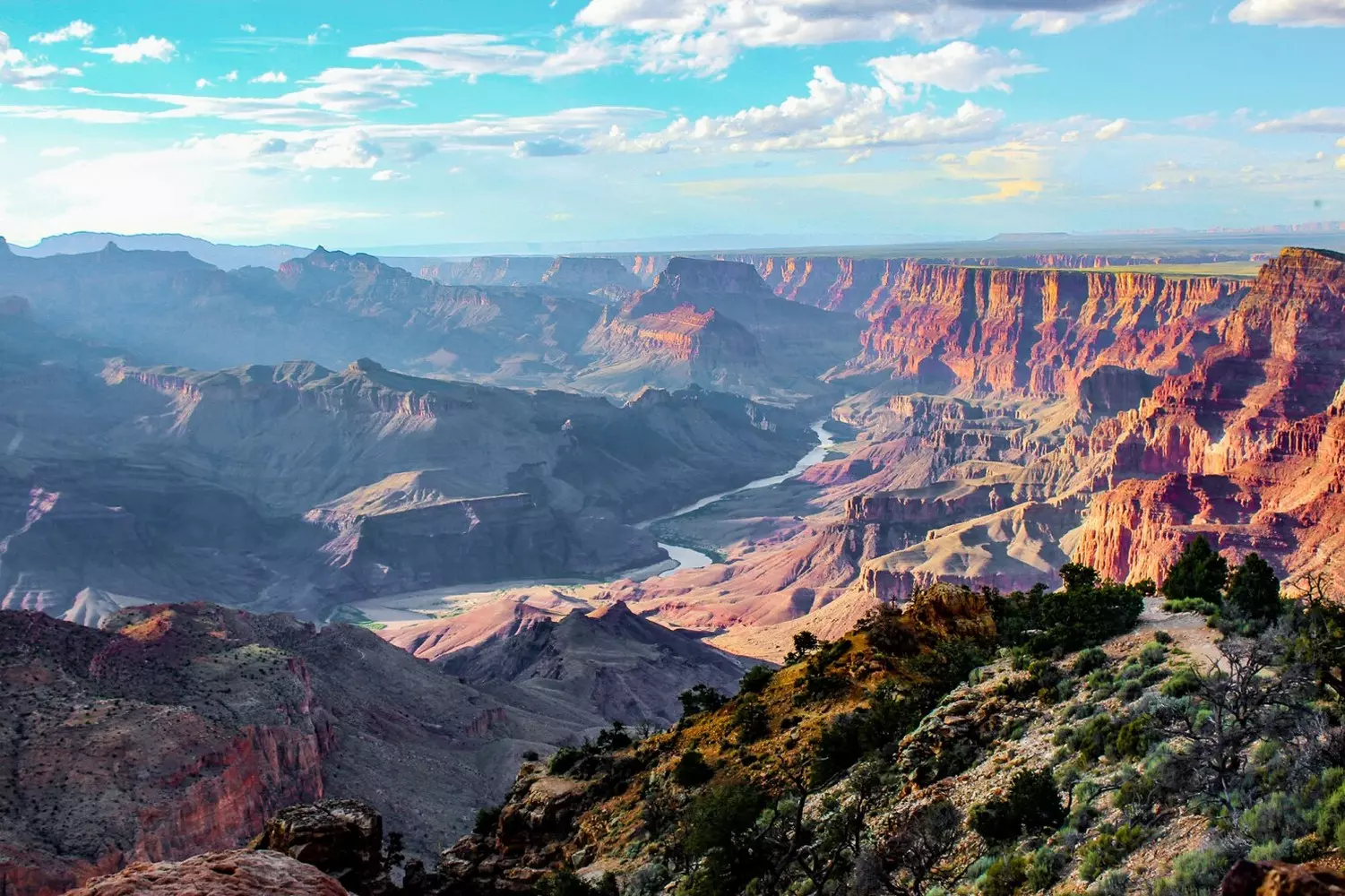
Historical and Cultural Treasures of Arizona: From Ancient Tribes to the Modern Era
Arizona is not only about magnificent natural landscapes, but also about a rich history filled with events, cultures, and traditions. Here, the heritage of Native American tribes, Spanish colonial legacy, and modern creativity intertwine, creating a unique cultural kaleidoscope. Let’s explore the most significant historical and cultural landmarks of the state.
- 01. Ancient Native Settlements: The Desert Holds Secrets
Arizona is home to many Native American tribes such as the Navajo, Hopi, Apache, and others. Their heritage is embodied in:
- Wupatki National Monument
Here, you'll find preserved ruins of Anasazi towns dating back to the 11th–13th centuries. Stone houses and towers speak of a highly developed desert culture. - Mesa Verde (although located in neighboring Colorado, it's closely tied to the region’s history)
Impressive cliff dwellings that reflect the lives of ancient inhabitants. - Pueblo de Tata
A modern Native settlement where you can experience living culture, crafts, and traditions.
Fun Fact: Anasazi is a Navajo word meaning “ancient ancestors” or “ancient enemies,” though archaeologists prefer the name Anasazi to emphasize the uniqueness of their culture.
- 02. Missions and Spanish Legacy: The First Steps of Europeans
In the late 16th and early 17th centuries, Spanish missionaries began their expansion into what is now Arizona. They left behind:
- Mission San Xavier del Bac
One of the best-preserved Spanish mission complexes in the U.S., still functioning today. It's often called “The White Dove of the Desert.” - Fort Thomas
An important 19th-century military post that protected the area and contributed to its development. - Spanish Architecture
Found in cities like Tucson and Sedona, where historic buildings and churches still stand.
- 03. Western Style and Cowboy Culture
Arizona is the heart of the Wild West, and its spirit is alive everywhere:
- Cowboy Museum in Phoenix
Exhibits showcase the lives of cattlemen, legends, and historic events. - Town of Tubac
One of the oldest European settlements, now a vibrant arts hub with galleries and craft workshops. - Annual Rodeos and Festivals
Celebrations where cowboy traditions live on today.
- 04. Contemporary Art and Cultural Centers
Today, Arizona is actively developing its modern culture:
- Phoenix Art Museum
The largest art museum in the Southwest, featuring collections from classical to contemporary art. - Tempe Center for the Arts
A gathering place for artists, musicians, and creatives. - Arts and Film Festivals
Arizona is famous for its annual events like the Tucson Film Festival and the Arizona Music Festival.
- 05. Indigenous Tribes and Their Living Traditions
Despite centuries of change, Arizona’s Native peoples preserve their languages, rituals, and crafts:
- Festivals and Ceremonies
Open to tourists — such as rain dances, masquerades, and traditional crafts. - Beadwork, Pottery, and Weaving
Traditional arts passed down through generations. - Educational Centers and Museums
Dedicated to the cultures of the Navajo and Hopi.
- 06. Arizona Architecture: A Blend of Old and New
From adobe homes and mission churches to ultra-modern buildings with green roofs — Arizona surprises with its blend of eras and styles.
- In Phoenix and Sedona, Santa Fe–style homes with clay facades and wooden beams are popular.
- Modern buildings use eco-friendly materials and are designed to suit the regional climate.
Family Adventures in Arizona: Where to Go With Kids for Lasting Impressions
Arizona isn’t just for nature and history lovers. This state is ideal for family trips, where children can not only have fun but also learn a lot. From interactive museums to close encounters with wildlife — here are places that will surely delight both kids and teens.
- 01. Arizona Science Center (Phoenix) — A Magical World of Science for Kids
Located in the heart of Phoenix, the Arizona Science Center is more than a museum — it’s a true science and tech adventure. Kids can spend hours exploring interactive exhibits and joining exciting experiments.
- Interactive Zones
Kids can create volcanoes, explore the human body, launch rockets, and control robots. - Planetarium and IMAX Theater
Captivating shows about space and nature that leave young viewers in awe. - Educational Programs and Workshops
Activities for all age groups spark curiosity and creative thinking.
This is where learning turns into play and discovery.
- 02. Phoenix Zoo — A Meeting With Animals from Around the World
Phoenix Zoo is one of the largest in the U.S. and home to over 1,400 animals. It impresses with both variety and thoughtful design.
- Wide Range of Species
From African elephants and giraffes to rare birds and reptiles. - Petting Zones
Kids can feed giraffes or pet goats — a source of pure joy and wonder. - Educational Shows and Tours
Teaching about the importance of wildlife and environmental conservation. - Playgrounds and Parks
Ensure comfort and fun during the visit.
The zoo is the perfect place to learn about animals in a fun and safe way.
- 03. OdySea Aquarium (Scottsdale/Phoenix) — An Underwater Journey for the Whole Family
The OdySea Aquarium is the largest in the Southwest and offers an unforgettable dive into ocean and freshwater ecosystems.
- Massive tanks with sharks, rays, and sea turtles — viewed through transparent tunnels and glass walls.
- Interactive zones where kids can feed fish or touch sea urchins and stars.
- Educational programs and guided tours — for all ages, making the experience fun and informative.
- Bonus attractions: 3D cinema, immersive shows, and exhibits focused on ocean ecology.
This aquarium is a feast for the eyes and soul of the entire family.
- 04. Bearizona Wildlife Park (Williams) — Safari in the Heart of Arizona
If you want to introduce your kids to real wild animals, Bearizona is the perfect choice. This safari park near Williams offers a unique experience:
- Drive-through safari: guests pass through areas where grizzly bears, bison, wolves, and elk roam freely.
- Walk-through zone: the second part of the park includes birds, foxes, and more, plus interactive exhibits and shows.
- Safety and closeness to nature — children can observe wildlife up close under expert supervision.
Bearizona is more than entertainment — it’s a way to feel the true spirit of the wild.
Arizona's historical and cultural landmarks are treasures that unveil both its past and present, helping you understand the soul of this remarkable land. Traveling through Arizona means more than seeing beautiful places — it’s touching living history and culture.
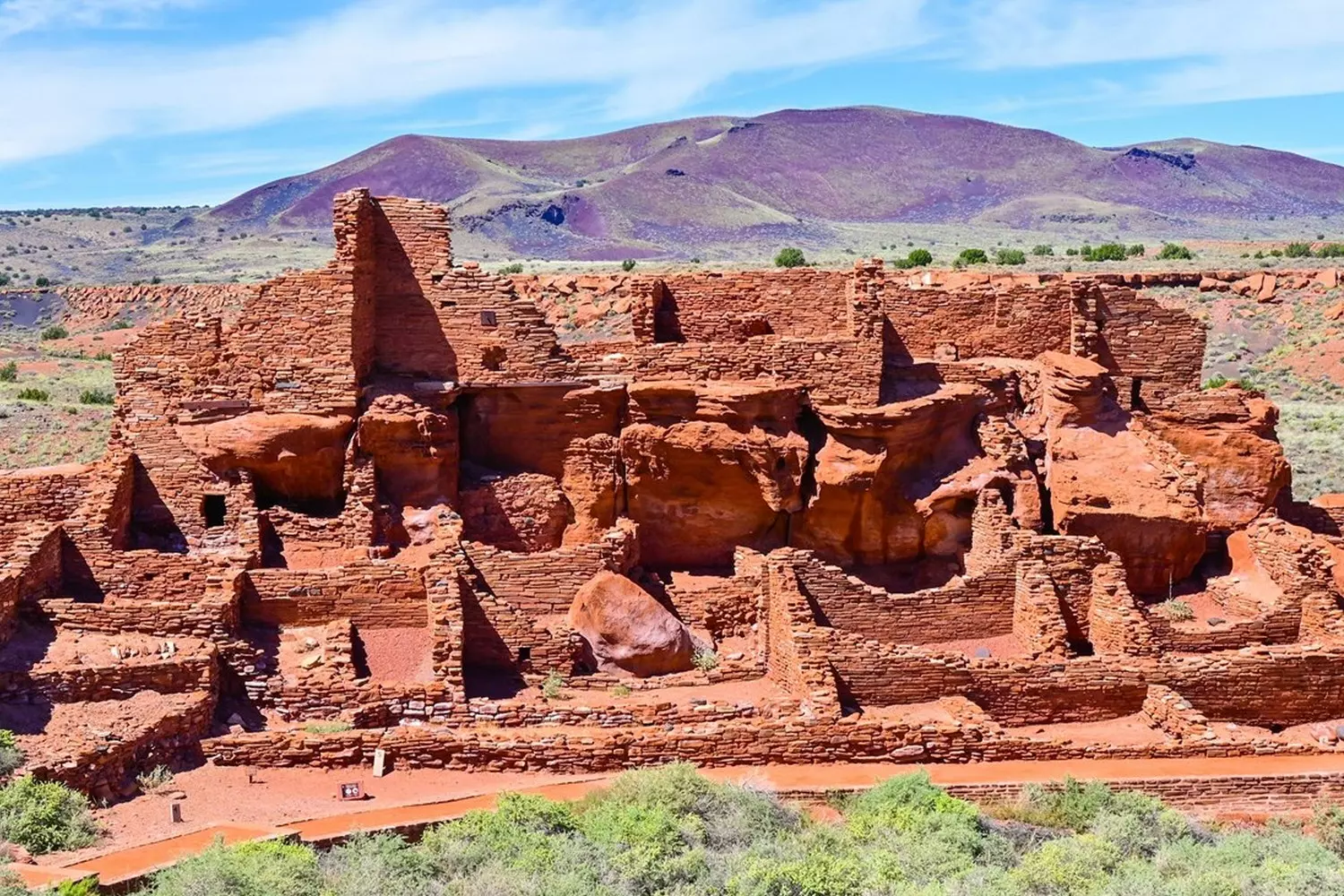
Culture, Traditions, and Cuisine of Arizona: The Flavor and Spirit of the Southwest
Arizona is a unique place where diverse cultures meet, centuries-old traditions take shape, and original culinary masterpieces are born. Here you can feel the atmosphere of the true American Southwest, imbued with the spirit of Native peoples, Mexican settlers, and modern residents. Let’s explore the most vivid aspects of the culture and cuisine of this amazing state.
- 01. Culture and Traditions: An Interweaving of Eras and Peoples
Arizona preserves the rich heritage of Native tribes — Navajo, Hopi, Apache — who still live by their customs and maintain traditional crafts.
- Festivals and Rituals
The Hopi rain dances — a vital ceremony intended to bring rain for the crops. Navajo masquerades and dances with traditional costumes and songs. Native culture festivals featuring vibrant exhibitions and workshops. - Crafts and Art
Beadwork, silver forging, traditional pottery, and carpet weaving. Contemporary artists are often inspired by national motifs, blending them with current trends. - Mexican Influence
In the southern regions of Arizona, the traditions of Spanish settlers live on in architecture, language, and celebrations — for example, the Day of the Dead (Día de los Muertos). - Contemporary Cultural Events
Art festivals in Phoenix and Tempe, music festivals, and street fairs. Theaters, museums, and galleries reflecting the diversity of cultural currents.
- 02. Arizona Cuisine — The Taste of the Desert and Neighboring Cultures
The state’s gastronomy reflects its history and geography. Here, Native recipes, Mexican spiciness, and American traditions come together.
- Dishes Using Cacti
Nopales — young prickly pear pads served in salads and hot dishes. Cactus candies and jams. - Traditional Native Cuisine
Fry bread — fried bread served with honey, meat, or as a base for tacos. Posole — a soup made from corn and meat with spices. - Mexican Roots
Tacos, enchiladas, tamales — classics of the southern menu, often seasoned with unique regional spices. Fresh tomato and chili salsa, guacamole, and hot sauces. - Modern State Cuisine
Fusion restaurants mixing traditional recipes with new ingredients and technologies. Use of local products — citrus fruits, honey, pecans.
- The Sonoita wine belt region is famous for growing grapes in desert conditions with a bright flavor.
- Local wines and craft beers are rapidly gaining popularity among gourmets and tourists.
The culture, traditions, and cuisine of Arizona form a kaleidoscope of colors and aromas that leaves no visitor indifferent. Immersing yourself in this world allows you to understand the soul of the state and feel the true magic of the Southwest.

Festivals and Celebrations of Arizona: A Vibrant Kaleidoscope of Traditions and Joy
Arizona is not only breathtaking landscapes and a rich history but also a true hub of cultural events. Here, the traditions of Native peoples are celebrated and honored, history is commemorated, and doors are opened to new creative initiatives. Every festival is an opportunity to immerse yourself in an atmosphere of joy, music, art, and hospitality. Let’s get acquainted with the main holidays and festivals of this amazing state.
- 01. Day of the Dead (Día de los Muertos) — a Mexican tradition with the soul of Arizona
Celebrated from late October to early November, it has become part of the cultural life of many Arizona cities, especially Tucson and Phoenix.
- Bright altars (ofrendas) with photos and favorite belongings of deceased relatives;
- Colorful processions and costumed performances;
- Music, dancing, and traditional Mexican dishes;
- Workshops on making paper flowers and masks.
This is a time when the living and the dead meet in memory and joy.
- 02. Pima Fair — a rural fair with the spirit of the West
Held in Pima County (near Tucson), it combines animal exhibitions, crafts, and traditional contests.
- Equestrian shows and rodeos;
- Exhibitions of agricultural products and handmade goods;
- Musical performances in country and bluegrass styles;
- Family entertainment and traditional cuisine.
The festival offers insight into the life and culture of the American West.
- 03. Scottsdale Arts Festival — a celebration of contemporary art
An annual festival in Scottsdale attracting artists and art lovers from across the country.
- Open-air galleries with paintings, sculptures, and photography;
- Workshops and interactive zones for children and adults;
- Concerts and street performances;
- An opportunity to explore new trends in the art world.
This event turns the city into a vibrant art space.
- 04. Heard Museum Guild Indian Fair & Market — Native American culture festival
Held in Phoenix and dedicated to the traditions and art of Native Americans.
- Exhibitions of beadwork, textiles, pottery, and jewelry;
- Dances and musical performances in traditional costumes;
- Lectures and workshops on the history and culture of tribes;
- An immersion into the unique world of Arizona’s Native communities.
This is a place where traditions find modern life.
- 05. Fiesta Bowl — a sports celebration
One of Arizona’s main sporting events — a college football bowl game held in Phoenix.
- Exciting games featuring top college teams;
- Parades, concerts, and family-friendly events;
- An atmosphere of celebration and competitive spirit.
For sports fans, it is one of the most anticipated events of the year.
- 06. Sedona International Film Festival — a celebration of cinema and creativity
Held in spring in the picturesque town of Sedona, attracting filmmakers, actors, and audiences from around the world.
- Screenings of films from various genres — from documentaries to fiction;
- Meetings with creators and creative workshops;
- A festival atmosphere surrounded by red rocks.
This is a unique event for lovers of cinema and art.
- 07. Tucson Gem and Mineral Show — the largest gem festival in the world
Gathering collectors and mineral enthusiasts from different continents.
- Exhibits of rare stones and jewelry;
- Lectures and tours about Arizona geology;
- An opportunity to purchase unique souvenirs and gifts.
This is a true paradise for admirers of natural beauty and science.
- 08. Arizona Renaissance Festival — a journey to the Middle Ages
Held in November near Phoenix, immersing guests in the atmosphere of knightly tournaments, fairs, and folk festivities.
- Performances by actors in costumes and theatrical shows;
- Craft shops and medieval cuisine;
- Equestrian tournaments and interactive games.
The festival appeals to both children and adults who love history and fun.
Festivals and celebrations in Arizona are a vibrant kaleidoscope of emotions, traditions, and creativity that make any trip to this state bright and memorable. Here, everyone will find a festival to their liking — from ancient Native rituals to modern art worlds and sporting battles.
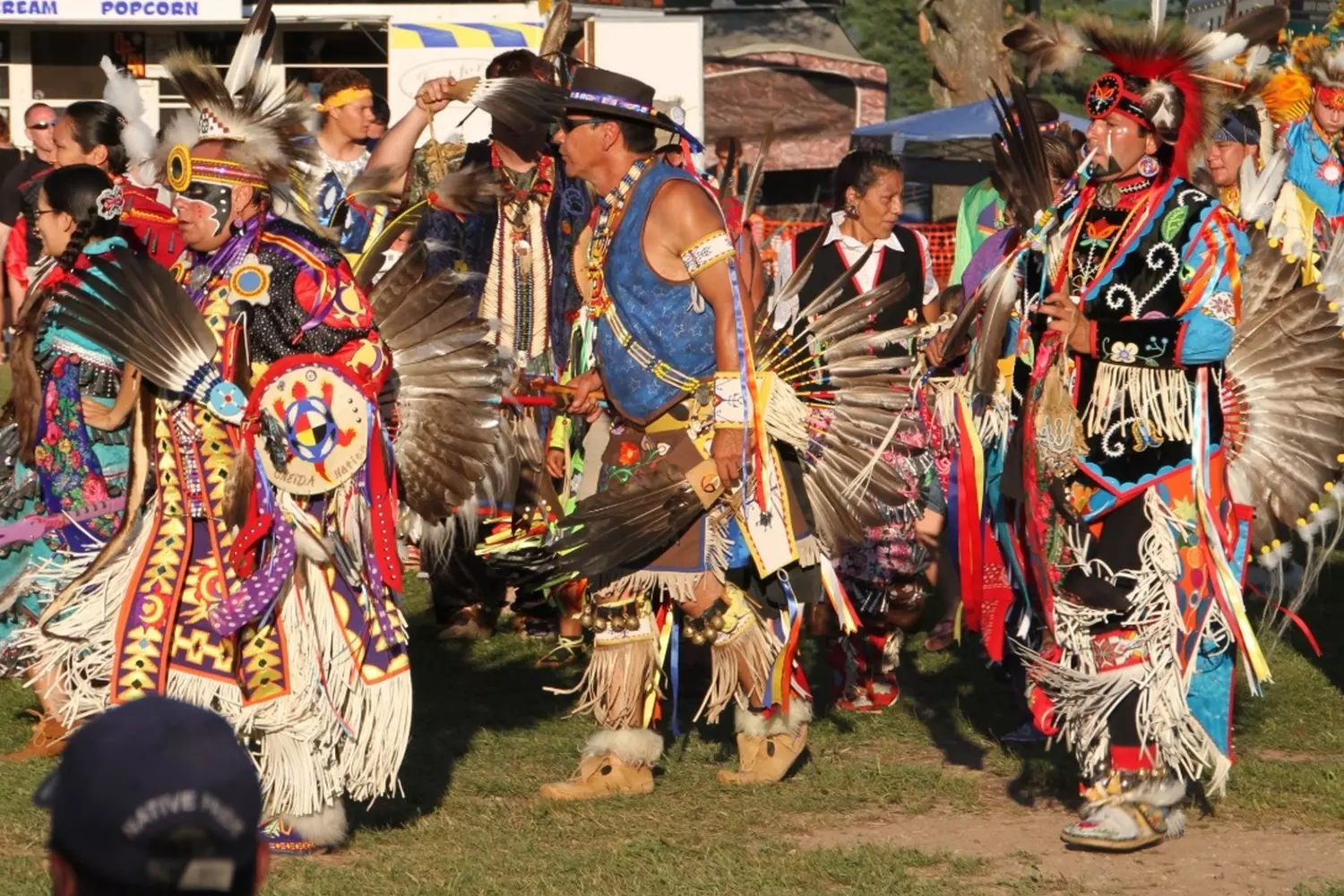
Arizona in Art and Culture: A Source of Inspiration and Creativity
Arizona is not only natural wonders but also a powerful cultural center where history, nature, and traditions intertwine in a unique creative flow. Artists, musicians, writers, and filmmakers draw inspiration here, creating works that reflect the spirit of the American Southwest. Let’s take a look at how Arizona is reflected in various forms of art and culture.
- 01. Painting and Sculpture: the colors and shapes of the desert
The Arizona landscape with its red rocks, endless deserts, and bright skies has become a muse for many artists:
- Tom Leffler and Michael Gallagher
Renowned artists who captured the drama and beauty of Arizona in their canvases. Their works are often exhibited in state museums and galleries. - Sculpture parks
For example, in Scottsdale, where contemporary artists create art objects organically integrated into the landscape. - Open-air painting festivals
Such as the Arizona Plein Air Festival, which gathers artists from all over the country.
- 02. Music of Arizona — from roots to modernity
The music scene of Arizona reflects its diversity:
- Traditional Native American music with drums, flutes, and vocal melodies conveying the spirit and rituals of the tribes.
- Blues, country, and rock — genres in which Arizona artists have achieved national recognition.
- Famous musicians like Joanna Newsom and Lindsey Krug drew inspiration right here.
- 03. Literature: stories about the desert and its people
Arizona has inspired many writers:
- Louise Erdrich — author of novels and stories set in Arizona, describing desert life with warmth and depth.
- Barbara Kingsolver and Craig Johnson — their books reveal the nature and culture of the state through human stories.
- Literary festivals are held in Arizona where authors and readers gather.
- 04. Film and Television: Arizona — the screen of the Wild West
Arizona’s landscapes have become the backdrop for many films and series:
- Classic westerns featuring John Wayne were shot in Monument Valley and other locations in the state.
- Modern film projects use Arizona to create atmospheres of adventure, thrillers, and drama.
- Film festivals like the Sedona International Film Festival support and develop cinema in the region.
- 05. Contemporary art and galleries
Arizona actively supports contemporary directions:
- Phoenix Art Museum
The largest art museum in the Southwest, with collections of contemporary art. - Galleries in Tempe and Scottsdale
Centers of creative life where exhibitions and art events are held.
- 06. Cultural centers and events
- Heard Museum in Phoenix — the main museum dedicated to Native American culture, hosting exhibitions, concerts, and educational programs.
- Arizona Theatre and other venues offer plays, concerts, and dance shows reflecting the state’s cultural diversity.
- Annual festivals, from art fairs to music festivals, attract thousands of participants and spectators.
Arizona is a living canvas where history, nature, and culture weave into unique art. The state inspires creators and invites everyone to experience its rich and diverse cultural life.
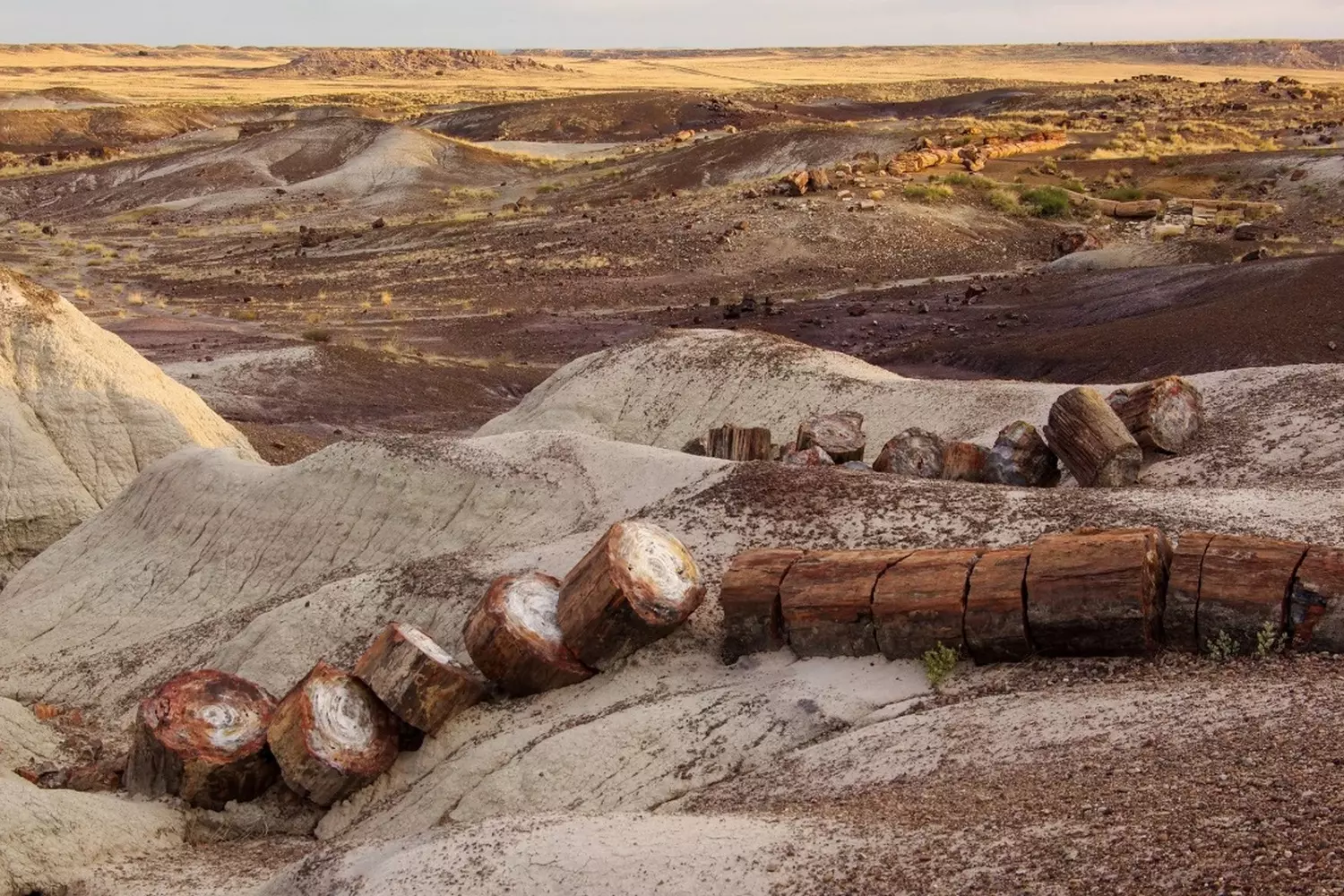
How to Travel in Arizona: Practical Tips and Life Hacks
Arizona is a vast and diverse state, where every corner feels like a separate world. To make your trip easy, comfortable, and interesting, it is important to choose the right mode of transportation, prepare for the climate, and consider local features.
- 01. Always carry water with you!
The desert heat can be deceptive, especially in the dry climate. It is recommended to have at least 2 liters of water per person per day, and even more during active hikes. - 02. Protect your skin and eyes
High UV exposure requires sunscreen with a high SPF, hats, and sunglasses with good protection. - 03. Respect the traditions of Native tribes
Many sacred and cultural sites are located on reservation lands with their own visiting rules. Do not take photos without permission, do not touch objects, and do not cross boundaries. - 04. Footwear
Choose comfortable hiking shoes even for short walks — rocky and sandy trails can be hazardous. - 05. Bring snacks and supplies
Many routes have no stores or cafes, so carry snacks and water with you. - 06. Communication
Mobile signal in mountains and desert is often weak or absent — it’s better to have offline maps and plan routes in advance. - 07. Weather in Arizona: when to visit and how to prepare
The climate of Arizona is quite varied, and weather conditions change depending on the season and region.
- Spring (March — May)
The most popular time for travel. Warm and comfortable, nature blooms, especially beautiful around Sedona and the mountains. - Summer (June — August)
Very hot, especially in southern cities like Phoenix and Tucson. Temperatures often exceed +40 °C (104 °F). It is better to plan trips to mountain areas or the northern part of the state. - Autumn (September — November)
A “velvet season” with mild weather, beautiful golden foliage in the mountains, and fewer tourists. - Winter (December — February)
Cool, with possible snow and even skiing in the mountains. Southern areas remain warm and comfortable.
Lifehack: keep in mind that desert temperatures can drop sharply at night — bring warm clothing even in warm seasons.
- 08. Tips for routes and transportation
- Start your day early: especially in summer, to visit places before the intense heat.
- Plan breaks for rest and water replenishment. Many attractions are in remote locations.
- Assess your abilities: some trails require good physical fitness and special equipment.
- Learn local laws and rules: for example, in some national parks it is forbidden to make fires or swim in rivers.
Traveling through Arizona is a true adventure where freedom and natural beauty combine with deep respect for the culture and climate of the region. Follow simple rules, use helpful tips, and choose the right mode of transport — and your experience in this amazing state will be vivid, safe, and memorable.
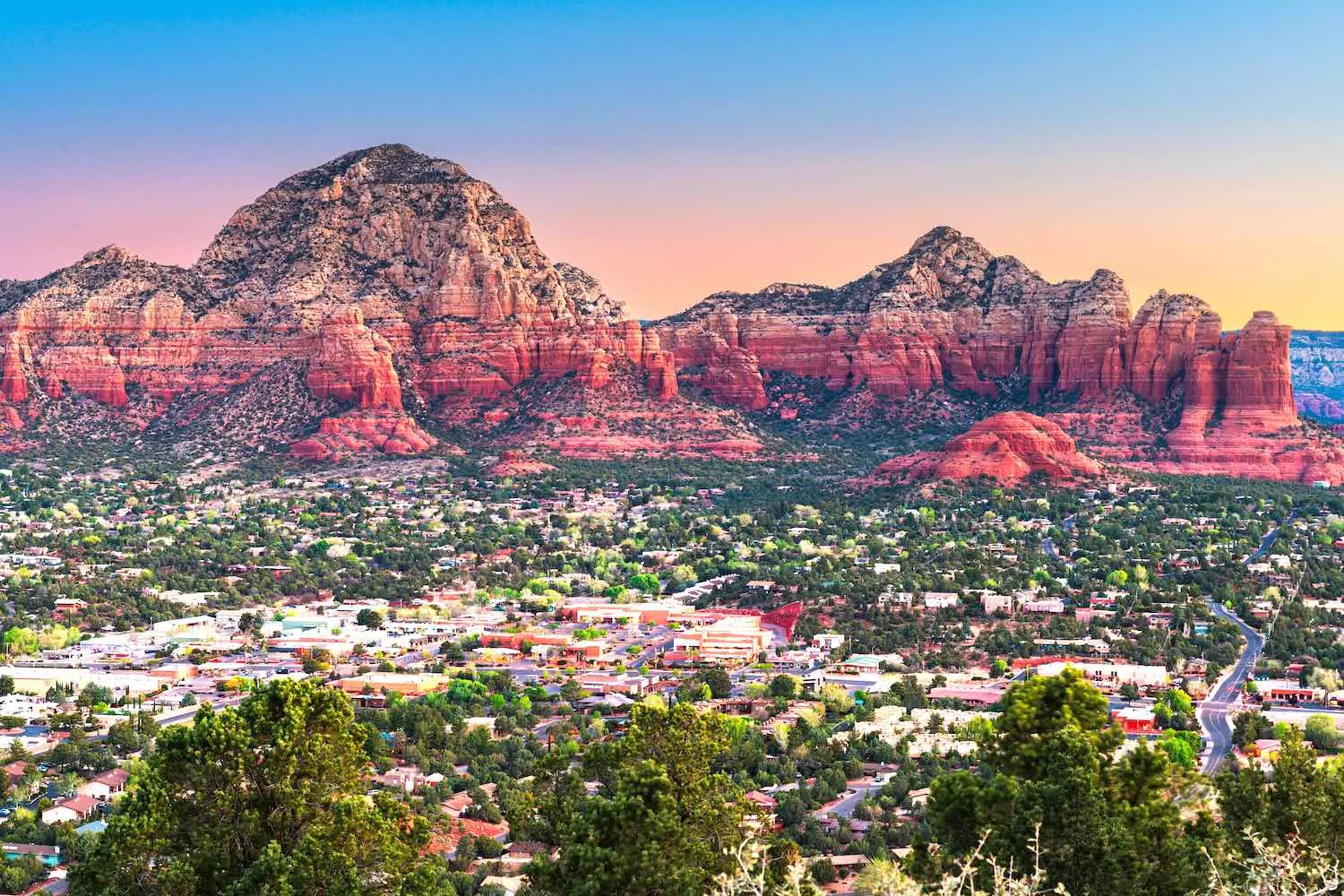
Unusual Laws of Arizona: What You Should Know to Avoid Trouble
Each U.S. state is famous for its unique laws — sometimes logical, and sometimes very surprising. Arizona is no exception. Here, amid endless deserts and sunny days, rules have developed that can astonish even seasoned travelers. Let’s explore some of the unusual laws in this state and why it’s important to know them.
- 01. It is prohibited to drop snakes from helicopters
It may sound like a joke, but in Arizona, it is indeed illegal to drop snakes from helicopters. This law originated from attempts to control snake populations using aerial methods, which were deemed dangerous and inhumane. - 02. Fishing from a camel is not allowed
Yes, you heard right. In Arizona, it is officially forbidden to fish while sitting on a camel. Although camels are not widespread here, this law remains from times when experimental camel herds roamed the desert. - 03. In Phoenix, it is not permitted to walk the streets in shorts without a shirt during summer
This old city law was intended to maintain “decency” on the streets. While it is not strictly enforced today, tourists are still advised to show respect for local traditions and dress culture. - 04. Ban on selling cars with dirty license plates
To prevent the use of dirty plates that obscure vehicle identification, Arizona prohibits driving a car with license plates that are hard to read due to dirt or dust. In the desert, this is an important rule, so keep your plates clean! - 05. It is illegal to impersonate a firefighter
This law aims to combat false fire service calls and unauthorized use of firefighting equipment. So if you’re thinking about dressing up as a firefighter as a joke — think twice. - 06. Feeding wild animals — even cacti — is prohibited in some areas
Arizona takes ecology and the protection of flora and fauna very seriously. For example, feeding wild animals can disrupt the natural balance, and interfering with cacti can harm the ecosystem. - 07. Riding horses on sidewalks in major cities is forbidden
In cities like Phoenix and Tucson, horses are not allowed on pedestrian sidewalks to prevent danger to both people and animals. - 08. Gun laws
Arizona is known for its freedom of gun ownership, but there are strict prohibitions on carrying firearms in certain public places — such as schools, hospitals, and some government buildings. - 09. Mandatory seatbelt law
Drivers and passengers are required to wear seatbelts — violations are punishable by fines. This is an important rule for safety on the roads. - 10. Ban on fireworks in residential areas
Due to the dry climate and high fire risk, the use of fireworks in residential zones is strictly controlled and often prohibited to prevent wildfires.
Arizona is a state with a rich history and a unique atmosphere, where laws may sometimes seem unusual but always have logic and roots in local traditions and natural conditions. Knowing these features will help you not only avoid trouble but also better understand the local culture and way of life.
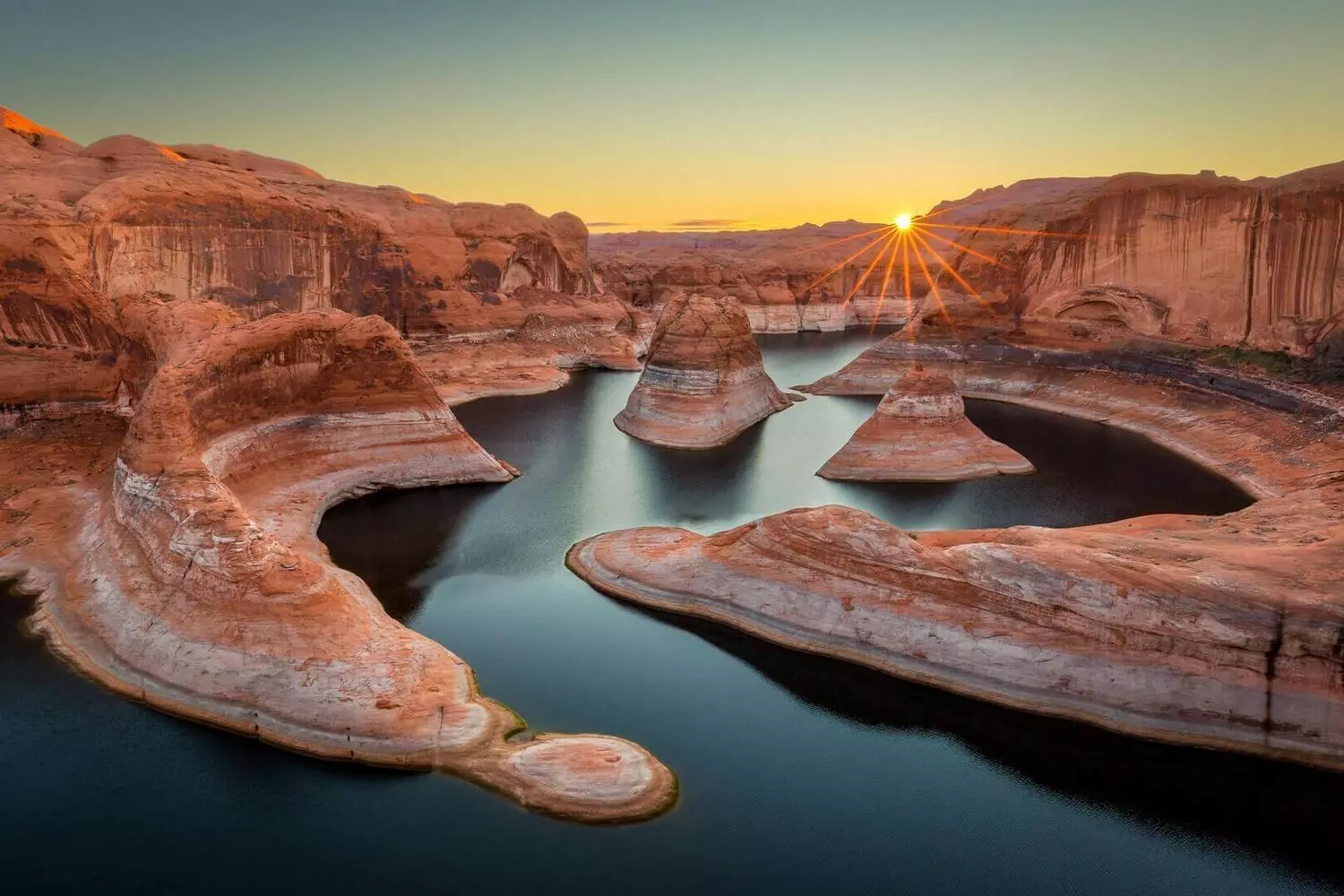
Arizona: 15 Surprising Facts About the State of Contrasts
Arizona is not just deserts, cacti, and the Grand Canyon. The state is full of paradoxes: here snow lies right next to cacti, and the London Bridge leads to the turquoise arches of McDonald’s. From cinematic curiosities to scientific discoveries — here’s a collection of the most unusual facts about Arizona that will change your perception of this corner of the USA.
- 01. London Bridge in the desert
In 1968, Arizona businessman Robert McCulloch bought the old London Bridge (built in 1831) for $2.5 million, dismantled it stone by stone, and transported it to the resort town of Lake Havasu City. Now it is the second most popular attraction in the state after the Grand Canyon. - 02. The town where donkeys patrol the streets
In the former mining town of Oatman, wild donkeys — descendants of animals that worked in the mines in the 19th century — freely roam the streets. Tourists can feed them, and local laws prohibit driving away the “long-eared mayors.” - 03. Turquoise McDonald’s
In Sedona, strict laws protect the natural landscape. To avoid disrupting the harmony of the red rocks, McDonald’s received permission to have a turquoise sign — the only one of its kind in the world. - 04. Forests cover 27% of the territory
Despite the image of a desert state, a quarter of Arizona is forested. Pines, Gambel oak, and even aspens grow here. The official state tree is the palo verde (“green stick”). - 05. No daylight saving time
Arizona (except for the Navajo Nation reservation) does not change clocks like most other U.S. states. The reason is the extreme summer heat: an extra hour of daylight would increase energy consumption for air conditioning. - 06. Meteor crater and the “Dumb Driver Law”
The Barringer Crater, 1.2 km in diameter, is one of the best-preserved meteor craters on Earth. Also, Arizona has the “Dumb Driver Law”: if you ignore barriers and get stuck in a flood, you must pay for the rescue operation yourself. - 07. Underground city on the Mexican border
In the town of Bisbee is the largest underground hotel in the U.S., the "Grand Canyon Caverns", located 70 meters below ground. During the Cold War, it stored supplies for a nuclear strike scenario; now it offers candlelit tours. - 08. Arizona’s own “Stonehenge”
In the desert near Cottonwood stands the "Spaceship Earth" — a 40-ton stone circle created by an artist in the 1980s. Locals claim it has special energy. - 09. State without a governor’s limousine
Arizona is the only state where the governor officially uses a personal vehicle (usually a pickup truck) instead of a state limousine. This tradition dates back to the 1980s. - 10. Ghost town with a working post office
Jerome was once known as the “wickedest town in the West” (due to miners and saloons). Now only about 450 people live there, but the post office has been operating continuously since 1883. - 11. Record-holding cactus
The tallest saguaro cactus in the world (14 meters) grows in Arizona. These giants can be up to 200 years old and weigh up to 8 tons. - 12. Ban on cut Christmas trees
In Phoenix, it is prohibited to sell cut Christmas trees — only live potted ones are allowed. The reason is fire safety in the dry climate. - 13. “Drunken” trees in Petrified Forest
In the petrified forest, some trunks lie at unnatural angles. Scientists believe that 200 million years ago they were toppled by a giant tsunami. - 14. Arizona — birthplace of the “gold rush”
The first gold in the U.S. was found not in California, but in Arizona in 1774. However, the deposit quickly ran out, and the fame went to the “neighbor.” - 15. The “burning” Havasu waterfalls
In the Havasu Canyon, there is a waterfall that appears fiery in the evening. Sun rays refract in the mineral-rich water, creating a flame effect.
Arizona is a mix of ancient forests, scientific discoveries, and absurd laws. Here, wild donkeys become tourist symbols, and a turquoise McDonald’s fits the landscape better than golden arches. The state proves that even in the desert, you can find unexpected surprises.
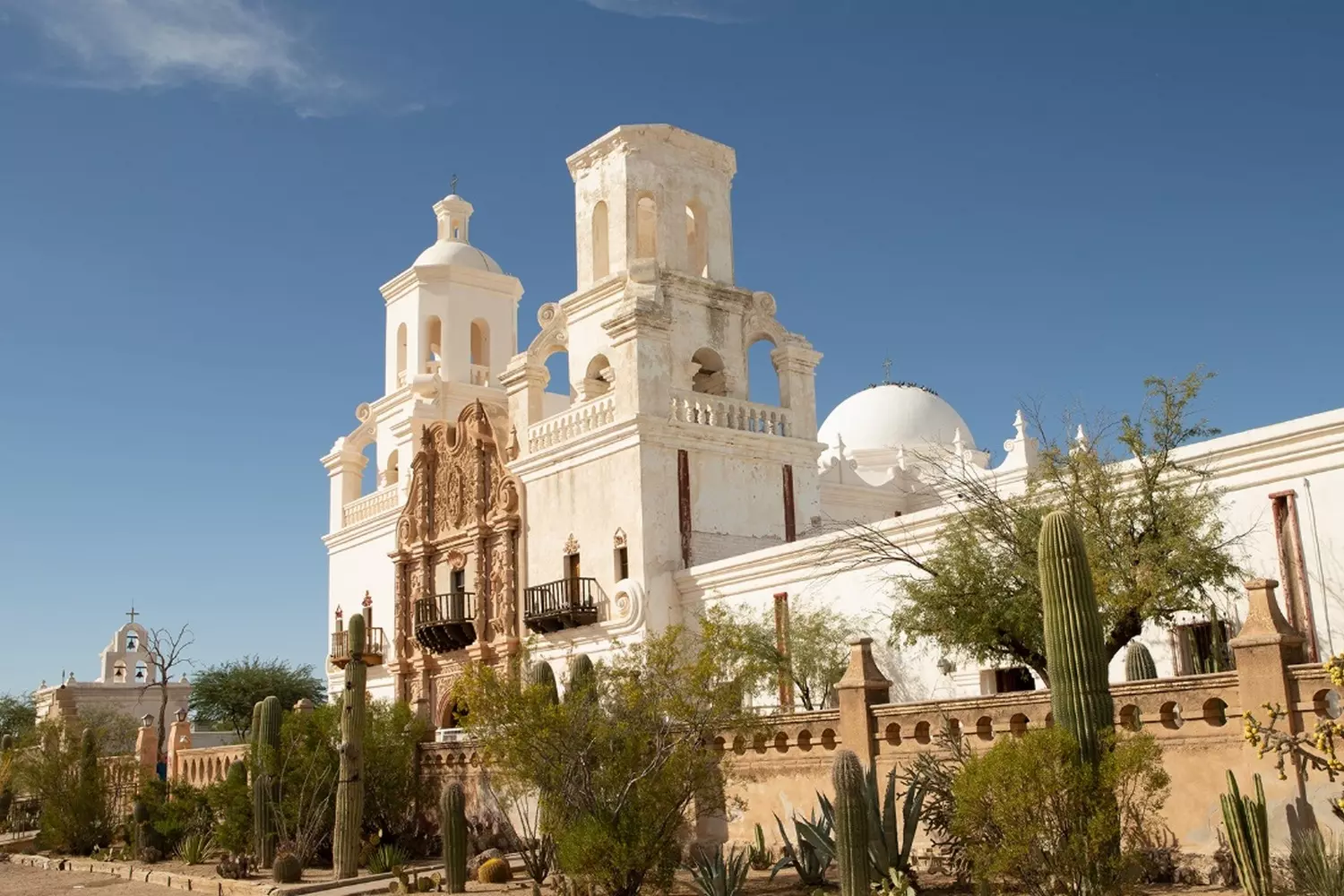
Travel Arizona with American Butler
Arizona is not just a point on the map, but a whole world filled with unique nature, rich history, and mystical places. To truly feel its spirit and see what is usually hidden from tourists’ eyes, it’s important to travel with those who genuinely know and love this state. That’s where the American Butler team comes in — your personal guide, organizer, and helper in creating the perfect itinerary. Why choose tours from American Butler?
- Individual approach
We carefully listen to your wishes and create an itinerary that perfectly suits you. - Professional guides
Our specialists don’t just share facts; they immerse you in the history, legends, and mysticism of Arizona, help you understand the culture and traditions of the Native peoples, and reveal the hidden meanings of every place. - Comfort and safety
We arrange car rentals, including SUVs for the toughest routes, take care of hotel bookings and transfers, considering all your preferences and budget. - Exclusive routes — unique tours to closed reservations, walks along paths once trodden by shamans, photo tours at dawn and dusk when the desert reveals its full beauty.
Options to include additional services
Photo sessions, craft workshops, gourmet tastings, participation in local festivals.
We know how important it is to feel confident in an unfamiliar place. American Butler cares not only about a rich program but also about your comfort and safety, so that every day of your journey brings joy and new discoveries.



























